Chapter 10 "Christopher Pellegrino or Christopher Columbus:
A Critical Study on the Origin of Christopher Columbus"
From THE DISCOVERY OF NORTH AMERICA
(A Documented History)
by Maurizio Tagliattini
mailto:mtagliattini@hotmail.com
Copyright © 1991 & 1998 by Maurizio Tagliattini
All Rights Reserved
Sent by
to
A short time after accomplishing the task of writing The
Discovery of North America, I decided to extend my investigation
by adding a final chapter devoted to the controversial origin of the great
discoverer, the enigmatic man from Genoa: Christopher Columbus.
The purpose of this critical chapter is not only to dissect and analyze
the already established findings on this subject, but also to illuminate
as fully as possible the intricate historical processes which shaped both
the content and form of these findings, a complicated task which, to my
knowledge, has never been undertaken before.
With this objective in mind, I will present findings chronologically,
as they unfolded through the centuries in the writings of various
historians and annalists, providing all of the critical documentation, and
historical evidence upon which I have reached my conclusions. I have
strived to present as clearly as possible to readers the paths of
evidence, so that they may make their own assessments relatively
independently of my own commentary and final conclusions.
Let me add that while historians must inevitably interpret documents
and historical evidence, I have conscientiously labored to be primarily
informative, adhering as closely as possible to available historical
documents and archival records.
Some of our most prestigious contemporary historians, including S.E.
Morison, argue that all major doubts have been resolved concerning the
origin of Christopher Columbus and the genealogy of his family of the
Colombos. They firmly assert that the great discoverer was born in Genoa
(or nearby) just as he stated in a surviving copy of his testament or
"mayorazgo" of February 22, 1498, recording that from that city
he had left and there he was born "pues que della sali' y en ella
naci'." Copious notarial deeds and papers were found at the archives
in Genoa and its sister city Savona. These revealing deeds (most of which
were discovered in the 19th century) pertaining to a Colombo family were
selected among thousands of such documents and construed by scholars to
constitute proof that Columbus was a Colombo born in Genoa or nearby
between August 26 and October 30, 1451.
On the strength of this legal documentation, the city of Genoa
published in 1932 a large volume reproducing in facsimile selected
documents, some of which had been already published dating back as far as
1602 when the Savonese juryconsult Giulio Salinerio presented the first
findings on Columbus from the archival records of Savona. This 1932 volume
titled Colombo was printed with the clear intent of
supplementing the already available 15 large volumes published in 1892-96
by the Italian government (R. Commissione Colombiana) to celebrate the
400th anniversary of the discovery of the New World. In three editions
(Italian, English-German, and French-Spanish), the volume leaves little
doubt that it was intended to convey to the whole reading world that, yes,
Christopher Columbus was not only an Italian born in Genoa, but as a
natural consequence, also a Christian of proven faith.
The 1932 Colombo published by the city of Genoa (with the
contribution of Giuseppe Pessagno and others) is the ultimate product of
the "Scuola Genovese" whose scholars had been involved in
Columbian Literature from the time of Gerolamo Bordoni in 1614 (as stated
by Pessagno in his 1926 work) down to Ugo Assereto who, at the closing of
the 19th century, had found the most assertive of all notarial deeds, thus
crowning the already "synchronous documentation."
In 1904, Assereto had finally published his newly found document under
the revealing title of The date of birth of Colombo asserted by a
new document. This precious "Assereto Document," once
matched with the one previously found in 1887 by Marcello Staglieno,
definitely established the birth of Columbus, as previously mentioned,
between August 26 and October 30, 1451.
In the preface to the multilingual Colombo, the mayor
"Il Podesta'" of the city of Genoa thought to reassure his
international readership of the primacy of Genoa on the longstanding issue
of the origin of Columbus, categorically stating:
To reject the documents here assembled in their authentic and
legitimate form is to deny the light of the sun; their acceptance
signifies the freeing of truth from the infinity of idle words that
are increasing every day in vain attempts to find outside Genoa the
origin of the discoverer of America.
The Podesta' of Genoa
Ing. Eugenio Broccardi
In the all-inclusive commentary to the Colombo, one finds
other statements which were in full agreement with the mayor and no less
emphatic, including this direct warning to readers:
In order to destroy this chain of evidence it is necessary to
suppress legal deeds committed to history...whoever wishes to deny the
discoverer's Genoese origin must face this documentation...
I have faced head-on this fortress of documentation during the course
of my years of research on the origin of Columbus, and must agree
wholeheartedly that challenging these intimidating (but judicious)
warnings places scholars in the plight of Don Quixote fighting the
windmills. As far back as 1602, Salinerio in his Adnotationes...ad
Cornelium Tacitum, after having in his possession only a few
Savonese documents related to Columbus, had voiced the same discouraging
conclusion:
Christopher made such clear mention of his country, that it is most
incredible that anyone today should doubt it or make research...
Yet, let me add, that from Salinerio to our own days, regardless of
such advice or warnings, from time to time inquiries about the true origin
of the famous man (whatever their nationalistic, ethnic or religious
motives) have continued to surface, like stubborn weeds which refuse to go
away. Hope never completely seems to die out of finding new
interpretations of what are still undeniably perplexing and inexorable
issues surrounding the origins of the great discoverer. What fuels this
hope, many researchers including myself could testify, is curiosity,
stubbornness, and progressive involvement.
In 1864, for example, Henry Harrisse (1829-1910), still young and
doubtless unaware of the numerous implications and complexities of the
Columbian Literature, wrote an essay optimistically titled Columbus
in a Nutshell . As it turned out, Harrisse eventually abandoned
his promising legal career and devoted the rest of his life to unraveling
the mysteries left behind for future scholars to solve by the enigmatic
Christopher Columbus.
Indeed, despite the copious documentation available today (and despite
what many modern luminaries suggest) many aspects of Columbus's life are
still stubbornly obscured by a thick veil of mystery which, quite
justifiably, generate uncertainty and considerable suspicion. While some
scholars, for whatever reasons, choose to ignore this historical veil, it
forms an intriguing, irreducible arabesque which will not disappear even
if one pretends it does not exist.
Much of the continuing mystery enveloping the private life of the great
discoverer was, as we shall see, created or devised by Columbus himself,
almost as if he envisioned himself the victim of unspeakable facts which
could only be mastered or supported through tactics of secrecy,
evasiveness, innuendo, and doubletalk. Although this assessment is rather
frankly psychological, I believe it is fully supported by a careful
examination and evaluation of his actions as well as by an analysis of
certain intangibles of his private life. These personal idiosyncracies
surface in his surviving writings as well as in the descriptions and
analyses of him reflected in the works of many people who knew him
personally.
One of the most celebrated detectives of the human mind, Cesare
Lombroso, the 19th century criminologist, judged Columbus's penchant for
secrecy so pronounced, in fact, that he labeled him decidedly paranoid.
Consider, for example, the fact that after Columbus became famous, he
eliminated altogether his family name from the signature in his letters.
He substituted for the name a small pyramid of Roman letters spaced with
strategically placed dots. For the past 500 years, this signature has
represented a puzzle whose solution has remained as elusive as many other
enigmas surrounding Columbus, all of which together give rise to the
conviction that his motives were not mere eccentricity, but a concerted,
deep-rooted desire to keep his true origin unknown.
What happens, sooner than later, to scholars who get intellectually
involved in the sum of Columbus's apparent oddities is that they find
themselves caught in an inexorable spider's web. One of these scholars,
Harrisse, made in 1888 the following revealing statement justifying his
many years of dedication to the captivating but thankless task of
wandering through the dense thickets and enigmas of the Columbian
literature:
The consolation that remains is that if a single copy survives, and
the book has been honestly written, time may instill into its
discarded pages new elements of life, and perhaps elicit from
painstaking students of history a word or two of esteem and gratitude.
Harrisse was only one of the many scholars who dedicated their lives to
wandering through the magic tunnel of the Columbian Literature, but
certainly he fully deserves the belated title of "Prince of the
Americanists" attributed to him by Carlos Sanz in 1958.
If Harrisse were still alive today, I would like to ask him one
specific, very direct question: If it was known from the very beginning
that Christopher was a Colombo born in Genoa, why did you neglect a
promising legal career and spend the rest of your life trying to piece
together the truth about his origins? Harrisse's hypothetical answer might
be, "Why don't you read my books?" But his Columbus in a
Nutshell does not confine the enigmas of Columbus to a nutshell
unless it is a nutshell suspended in the center of an expanding web of
contradictions and irreducible ambiguities.
My suspicion is that many writers on Columbian Literature enter the
historical fray by wishfully thinking, like Harrisse, that they can write
a book encompassing all of the complexities of the man in a few pages.
Then after a while, without fully realizing it, they find themselves
surrounded by enigmas on all sides; like Dante they find themself trapped
in the middle of nowhere wandering on the verge of a Divine Comedy.
On this leit-motif, let me recount the story of my own
entrapment in the Columbian labyrinth. In retrospect, it may have begun
the first time I went to Mexico, but I failed to identify the symptoms
which were those of an uncomfortable illness that affected me almost like
the experience of seasickness. I was told my symptoms were nothing to
worry about, that I was probably just another victim of "Montezuma's
revenge." But in 1983 I traveled to the Dominican Republic, and there
on the beautiful island of Hispaniola, I experienced again these same 'new
world' symptoms of a vague sickness. Eventually I recovered from this
sense of physical discomfort and what I now know to be the first signs of
my Columbian entrapment. And wandered into the hills with my backpack,
very much aware this time of feeling like a reincarnated Christopher
Columbus in search of the ghosts of his adventurous era. From up there,
the night view of the island was captivating, compelling: I stood among
palm trees, under the starry arch of a tropical sky, with the moon
silvering the surface of the exotic sea crowned by a string of small bays
and coves, stretching as far as my eyes could see. Feeling caught up in
mysterious influences, I spent three nights on the hilltop living in a
primitive hut, "bohio," that seemed to be a relic from the
preColumbian times. This experience was so overwhelming, I wrote Lights Across the Bay
, a romantic short story of an imagined Columbus drawn mostly from
school-day fantasy and reminiscences.
In retrospect, I wish that my approach to Columbian Literature had
remained similarly romanticized that way, but instead the Columbian web
entrapped me and transformed me into a researcher, a historian compelled
to write with the mind as well as the heart. Now after devoting so many
years of almost compulsive investigation of the Columbian web, I hope that
I can free myself by unraveling all that I have learned.
After this lengthy introduction to the dangers of Columbian Literature,
let us focus in this chapter on the complex scholarship of Columbus'
origins. We will conclude through a radical reinterpretation of a document
known to Columbian scholars (but whose extraordinary significance has for
various reasons been generally ignored), that Christopher was a child born
out of wedlock and forsaken by a father who he probably never knew but who
carried his family's name.
It goes beyond the scope of this work to attempt a psychoanalytical
understanding of why Christopher kept to himself the traumatic secret of
his humble beginnings. But one must recognize that Columbus lived during a
time when both honor and fortune were attached to a family's name. And one
can speculate that the humiliating experience of being born out of wedlock
(difficult perhaps for some moderns to appreciate) strengthened
Christopher's later determination to prove to himself and to his fellow
men; and that the discovery of a New World was born, in effect, of
compulsive overachievement and great individual struggle for personal
rehabilitation.
For the reader to properly evaluate the conclusions I have reached on
Christopher's modus vivendi and origin, he must now undertake to travel
along a long tortuous road, composed of 15th century historical facts, of
contemporary chroniclers and historians writing about Columbus, of a great
body of circumstantial evidence and, of course, of the works of the First
Admiral of the Ocean Sea himself.
To reiterate, what we know today of Columbus' Genoese origin derives
primarily from notarial deeds in the possession of the State archives of
Genoa and Savona, most of which were not found until the 19th century.
From these deeds, one can establish, with a reasonable degree of
certainty, that a Christopher, son of a Domenico Colombo, was indeed born
in Genoa or nearby in the year 1451.
However, we must keep in mind that the search for the origin of the
Discoverer did not begin in the 19th century. In the previous 300 years
(particularly in the 16th century), considerable research work had already
been undertaken in an effort to arrive at some vestige of truth about
which family was in fact the real family of the famous discoverer. This
search had not been simple or straightforward, but extremely
controversial, producing in its wake an array of unreliable documentation.
Complexity was inevitable from the outset for the simple reason that,
apart from the sparse information about Christopher's family, his own
birth or baptismal paper was never available. It was not until after the
"Concilio di Trento" (1545-1563) that the Roman Church
authorized the issuing of baptismal certificates. Most churches, however,
probably kept a listing of the baptized, an assumption whose particular
relevance in the case of Christopher we will discuss later. On the
question of Columbus's age, however, statements (unfortunately confusing)
were directly recorded not only by Columbus, but by his son Fernando, and
the historian Bartolome' de Las Casas. The latter two historiographers
were in possession of Columbus' writings; they were in close personal
contact with him and members of his family. Nevertheless, even so,
remarkably, they seem unable or else unwilling to reveal anything
conclusively elucidating the matter of Columbus's exact age. Naturally,
their failure has greatly added to the mystery surrounding the true
Christopher.
Columbus himself, in a letter addressed in 1501 to the Spanish
Sovereigns, gave the following information:
De muy pequeña edad entre' an la mar navegando y lo he continuado
hasta hoy; la misma arte inclina a quien la prosiguea desear saber los
secretos deste mundo; ya pasan de quarenta años que yo voy en este
uso.
By 1501, here Columbus writes, he had been navigating for forty years
which, if factual, would indicate that he first went to sea in 1461. If by
an early age, "de muy pequeña edad," we intend the age of 14,
then he could have been born in 1447. The statement by Columbus was
reported by his son Fernando in Chapter IV of his Historie...
and by Las Casas in his Historia de Las Indias, Libro I,
cap. III.
In the entry for Columbus's journal for December 21, 1492, we read this
biographical information:
Yo he andado veinte y tres años en la mar, sin salir della tiempo
que se haya de contar...
If we deduct 23 from 1492, we arrive at the year 1469, from which
further deducting 14 years we are left with a birthdate of 1455!
It is not surprising, then, judging only from these two conflicting
statements, taken from others just as contradictory, that a great natal
confusion has plagued Columbian scholars since the very beginning.
To the information obtained from Columbus, Fernando, and Las Casas, we
have to add similarly conflicting data obtained from his contemporary
historians, namely Oviedo as well as Peter Martyr (Pietro Martire), a
close friend of Columbus (and of his two children, namely, Diego and
Fernando, who were pages at the Castillian court where Martyr was a
teacher).
We will also recall interesting observations on Columbus's origin made
by prominent historians such as Harrisse, Vignaud, Peragallo, etcetera. In
particular, Henry Vignaud, referring in his Critical Study of 1903 to the
historiographers who related intimately to Columbus, did not hesitate to
suggest a conspiracy of silence on their part, expressing his concern as
follows:
Columbus has never correctly reported his age...both his son and
Las Casas, who have written his life in its fullest details, who knew
him personally, who had been in the closest relation with all members
of his family and who had had all his papers in their hands, maintain
on this point a silence which is undoubtedly remarkable... when any
special circumstances bring any individual prominently into
light...the first questions asked about him bear upon his age and
whence he comes...
Vignaud supports his theory of a conspiracy of silence on the fact that
the abovementioned Fernando and Las Casas "did not wish to convey to
us what they knew..." Considering this last statement by Vignaud, one
wonders whether it ever entered the historian's mind that Fernando and Las
Casas themselves were, perhaps, kept totally in the dark about the origin
of Columbus.
After all, if, as I believe, Columbus had been born out of wedlock and
then abandoned, obviously he would not wish to reveal more of himself than
the world already knew, namely that he was born in Genoa and that from
there he had left "de muy pequeña edad."
At this point, let us briefly summarize some basic historical
information about the known life of the Discoverer which is imperative in
comprehending notarial deeds and other evidence pertaining to his case.
From the traditional historical information obtained from Fernando (the
second son of the discoverer, whose last name was "Colón"), Las
Casas, and Christopher himself, we have a future discoverer who leaves
Genoa at an early age. Eventually, he becomes an expert seaman who will
navigate as Admiral the most unknown and perilous waters of the world.
However, if from the multitude of notarial deeds, we examine contracts and
obligations of various kinds which have been laboriously assembled from
the archives of Genoa and Savona at the time when the Colombo family of
Christopher lived in those two cities, a very different portrayal emerges.
For example, a notarial document drawn in Savona in 1472 indicates that
at the age of 21 Christopher was still there working as a weaver;
obviously he could not have started a meaningful sea life until at least
1473. We are presented then with two radically different stories. Now add
to this difficulty the fact that no record exists indicating that
Christopher, after he had left Genoa, ever called himself Colombo or
Columbus. Throughout his known life, he used what amount to aliases; thus
the whole matter of trying to identify the real Columbus becomes even more
muddled.
This is not a fanciful assessment of the difficulty. Ever since
Salinerio published in 1602 the first documentation from Savona, esteemed
luminaries over the centuries have found themselves confronted with the
perplexing task of matching the information obtained from notarial deeds
with the accounts provided by Fernando, Las Casas, and Christopher.
With the hope of creating some kind of order from chaos, some scholars
chose to discredit the works and words of those witnesses who knew
Columbus most intimately, namely Fernando, Las Casas, and Christopher
himself. After all, they had all long died and could no longer defend
themselves; on the contrary, those scholars were alive and present.
Thus, Henry Vignaud (1830-1922), whose 365-page book of 1903 embraces
some of Harrisse's perplexing finds and final assessment, practically
accuses Columbus, Fernando, Las Casas, and even Bartolome' Colón,
Columbus's brother, of fraud! However, Vignaud, becoming cautious at the
end of his work and after having exhausted his theories, chose to reveal
that he still maintained some reservations about the conclusions he had
reached, stating:
However logical and convincing they may be, they cannot have other
than purely hypothetical character.
Let us review the basic account of Christopher Columbus's whereabouts
before he made his great and fateful crossing of the Ocean Sea, relying on
traditional history, and my own assessment and interpretive commentary.
First of all, I see no critical reason why we should not believe
Columbus's famous words when he stated that he was born in Genoa and that
from there he had left at a very early age. Taking into consideration some
of the legal documents and contemporary Genoese chroniclers, we can
surmise that Christopher, perhaps at the traditional age of 12, was
employed as an apprentice woolcarder in the shop of a Domenico Colombo, a
woolweaver by profession. We can also surmise that the young Christopher
was not at all fascinated by the prospect of spending the rest of his life
engaged in such tedious work and patiently awaited the nights to rest and
dream of a better world. An entirely New World which, hopefully, someday,
he would try to reach following the direction of the breeze that inflated
the sails of the caravels that so often he had observed leaving the harbor
of Genoa for mysterious voyages toward the horizon.
If he followed Genoese tradition, then at 14, an age confirmed by
Fernando, we can see him as a "mozo" or deck hand finally on his
way to fulfill his ever present dream of escaping his life in Genoa,
finding a new life in the sea, becoming an expert seaman and reaching his
new world wherever it might be.
Except for the notarial documentation, there are no historical records
that he ever called himself "Cristoforo Colombo" or its Latin
equivalent of Columbus; however, at the time of his first departure, it is
hardly possible to think that he did not do so. Still, no document
pertaining to the maritime history of Genoa of that time has ever come to
light revealing any sailor of this name (Pessagno).
After leaving Genoa for his first (and probably short) experience with
the sea, Christopher navigated for many years over the Mediterranean Sea
arriving as far as the Island of Chios and the African coast. During this
time, again no historical records exist indicating that he ever called
himself Colombo or any other family name.
Not until he resided in Portugal was he known as "Colón."
And Fernando Colón, the second son of the discoverer who was born in
Spain, admitted in the famous biography that the origin of his father
"was not without some mysteries."
Concerning the arrival of Columbus in Portugal, we have information
obtained from the notarial archives which contradicts Columbus's account
as cited by Las Casas. In May of 1501, writes Las Casas, the Admiral
(Columbus) was received by King Ferdinand in Segovia and, at that time,
the discoverer, to make a point, stated that he had spent 14 years trying
to convince in vain the Crown of Portugal to sponsor his great design.
It is generally accepted that Columbus moved from Portugal to Spain at
the end of 1484 or in the first half of 1485.
If we accept Las Casas's reference, then we can deduce that Christopher
first arrived in Portugal around 1470 with enough credentials as navigator
to be able to submit, some time later, his plans and impress the Crown. On
the other hand, according to the notarial deeds, Columbus did not put out
to sea until 1473 and, as a businessman or trade representative, made it
to Portugal only in 1476 (say some historians) by swimming to shore after
surviving a sinking ship.
These conflicting dates are so important that throughout most of the
19th century, the best that scholarship had to offer was dedicated to the
pursuit of determining the right date of Columbus's arrival in Portugal,
thus solving the dilemma.
The credibility attached to other documents versus the credibility of
the biographers underwent an arduous process of evaluation. And, as
frequently happens, the documentation eventually won the day. The
importance of finding the right date is self-evident because if one does
not subscribe to the idea of a Columbus businessman who first arrives in
Portugal in 1476 without having much prior experience as a navigator, but
mostly experiences at sea as a passenger, not only is a particular
document made questionable, but a whole series of supporting documents as
well.
These documents, as we will see later, constitute the pieces of a very
carefully assembled mosaic of legal evidence on the life and actions of a
Christopher and his Colombo family of Genoa and Savona. In addition, if it
can be established that Columbus did not arrive in Portugal until 1476,
this in effect means that the Discoverer was not there in 1474, where and
when, according to both Fernando and Las Casas, Columbus received upon
request the famous letter and nautical chart (showing the westward
approach to Japan) from the Florentine astronomer and savant Paolo Dal
Pozzo Toscanelli. By this date, Columbus had enough cosmographical
knowledge to build a globe and send it to the famed Florentine for his
opinion on the idea of reaching Asia by navigating the Ocean Sea westward.
Toscanelli replied by sending his encouragement, good wishes, the chart,
and a copy of a letter that he had previously sent to a Portuguese canon
named Fernam Martins.
A sketch of this much debated nautical chart that Las Casas stated that
he himself had seen and that Columbus had carried with him during his
first crossing of 1492 was eventually found in the 19th century in
Florence annexed to a lecture by Toscanelli on the comet of 1456, and for
this reason attributed to him. Now it belongs to the "Codici
Magliabecchiani"of the "Biblioteca Centrale di Firenze" and
the esteemed Florentine historian Gustavo Uzielli (1837-1911) refers to it
in these words: "No doubt it was a similar sketch which Toscanelli
employed to draw the map he sent to Martins."
In any event, whether Christopher reached Portugal in 1470 as an
experienced sailor or in 1476 as a representative of a Genoese merchant
house, he was to remain there until 1485.
We will relate a few important events of his Portuguese life as "Cristovam
Colón" or "Christovao Colom" as the Portuguese chronicler
João de Barros (1496-1571) called him in his work.
The ship that carried Christopher had sunk as a consequence of a fierce
sea battle which took place some two miles off Portugal near Lagos and the
future discoverer managed to survive by swimming to shore with the help of
an oar that had floated free. Although injured, he recuperated with the
assistance of helpful people and moved on to Lisbon which had at the time
a considerable community of Genoese (Peragallo).
Much has been written about the life of Columbus in Portugal, but even
the best narratives by the most prestigious historians reveal very little
for the simple reason that no reliable documentation has ever appeared to
substantiate any of his activities. One of the narratives most intriguing
for its implications, however, is one by Salvador de Madariaga (Madrid,
1984, 4th ed.) under the title Vida del muy magnifico señor Don
Cristobal Colón. Madariaga, incidentally, has Christopher landing
in Portugald exactly on August 13, 1476. And as a consequence of having
survived a "trial by fire" (to use the historian's words), the
future discoverer immediately, then and there, was born again, "Volvio'a
nacer." With a marvelous narrative of 500 pages, rich in insights and
careful evaluations, the author suggests on the basis of considerable
circumstantial evidence that Columbus could have been the son of a Jewish
family who had moved to Genoa to escape the Inquisition and/or to seek
better opportunities. Without the help of precious documentation,
Madariaga's case could, of course, never be substantiated and the author
himself was the first to recognize this fact.
To elaborate for the moment on the issue of a Jewish Colombo or Colom
family in Italy, I consulted Dr. Raffaello Lattes of the Synagogue of
Modena who mentioned to me that in the 19th century, there was in fact a
rabbi in Leghorn named Colombo. He also showed me a booklet by Samuele
Schaerf published in 5865-1925 and titled I cognomi degli ebrei
d'Italia ( The lastnames of Italian Jews) which
listed a Colombo. Having no direct bearing on my present work, however, my
inquiry ended there.
In Lisbon, Columbus met his younger brother Bartolome' Colón who, like
Christopher, had a great inclination for cartography. As everyone seems to
agree, it was the study of this art form that helped both brothers start
their Portuguese life. Where they learned and how they practiced such a
talent is still one of the many mysteries of Columbian Literature. Some
scholars suggest that they had studied in Genoa where almost certainly
there were nautical schools. Madariaga states that Christopher was a
"Doctisimo cosmografo" and already possessed considerable
experience on the sea.
At the time of Columbus's arrival, the throne of Portugal was occupied
by King Alfonso V. Even though his country was not yet seeking to change
the shape of the world, in 1470 he had appointed his son (who in 1481
would become King João II) as chief of explorations and discoveries.
Whether Christopher by 1476 had been a proven seaman or just an
aspiring one, no one denies that he navigated in 1477 from Portugal to
Iceland, making observations on sea tides that later in 1497, I may add,
John Cabot also made, indicating that Columbus may have gone further
northwest than many scholars are generally willing to accept. He also
undertook several voyages to the western coast of Africa and the island of
Puerto Santo. Without going into details, it was in either Puerto Santo or
in Lisbon that he met his future wife, Doña Filipa de Perestrelo y Moniz,
daughter of Bartholomeu Perestrello of Italian origin from Piacenza who
had been the Captain or Governor of Puerto Santo. From this marriage in
1479 or 1480, Diego Colón was born, the future Second Admiral of the
Ocean Sea.
The ascent to the throne of João II in 1481 gave Columbus his last
chance to gain a sponsorship from the new King for his grand design but,
as we know, he failed. By the end of 1484, Columbus was a widower and with
his child Diego, writes Fernando, secretly moved to Spain.
Tradition has it that Christopher Colón arrived in Spain at Palos de
La Frontera on board a ship with his son Diego, then about five years old.
Almost destitute, he found assistance at the nearby Franciscan Monastery
of Santa Maria de La Rabida where he met Friar Juan Perez (who was a
confessor of Queen Isabel) and Friar Antonio de Marchena to whom he
confided his fantastic designs and showed his charts. Both of them proved
receptive to the future discoverer's presentation, and worked to arrange
an audience for him with the Sovereigns of Spain. Friar Marchena (who S.E.
Morison describes as a "a man of imagination and human
sympathy") was already well connected with the Royal Court as a
"buen astrologo." The first audience with Queen Isabella took
place in May of 1486 at the Alcazar of the Royal city of Cordoba. Before
leaving for the court, Columbus left Diego under the care of the friars.
A point of minor controversy is exactly when Columbus left Diego with
the friars of La Rabida, indicating just how seriously scholars have
researched the life and actions of Columbus in Spain, particularly his
first years. Both Harrisse and Navarrete have brought forward a court
deposition of 1515 by a Garcia Hernandez, friend of friar Juan Perez, who
testified that Diego was not left at La Rabida at the care of Franciscan
friars until 1491!
Christopher Colón, the widower, while in Cordoba met Beatriz Enriquez
who became his mistress and in 1488 out of wedlock gave birth to his
second son Fernando, already very familiar to us as the author of his
father's biography, the famous Historie...
Dated May 5, 1487, we possess (thanks to the Documentos Diplomaticos
assembled by Don Martin Fernandez de Navarrete in book II of 1825) a first
document certifying the presence in Spain of Columbus. He is identified
simply as Cristobal Colomo "Extrangero." On this date, 3.000
maravedis were paid to him by Alonso de Quintanilla on the order of the
Bishop of Palencia for unspecified services rendered to their Highnesses
of Spain.
On March 20, 1488 Columbus received a letter from the Portuguese King
João II addressed to Cristovam Colón, "our special friend in
Seville." In summary, this brief letter informs Colón that the King
is willing to re-examine his plans and that he can go back to Portugal
without fear of being persecuted by the law.
On May 12, 1489, an order was issued by the Spanish Sovereigns to
officials, justices, et cetera, and all other subjects of Castille to
facilitate and assist Cristobal Colomo in traveling to court and other
places in their Kingdom. Let me comment that this order which was widely
circulated undoubtedly provoked the envy of many officials who
subsequently joined the growing list of his detractors. They must have
asked themselves who this stranger was who deserved so much attention.
We come to the most interesting of the Spanish documents, dated April
17, 1492, "Villa de Sancta Fe de La Vega de Granada." It
contains the famous agreements, or "Capitolaciones," between the
Sovereigns of Spain and a foreigner, exapprentice woolcarder from Genoa
who is identified as "Don Cristobal Colón," their Admiral.
With the fall of Granada and the end of the war with the Moors, the
Sovereigns of Spain finally consented and agreed to organize an expedition
led by Columbus which would reach the Indies by going westward. According
to these capitulations, Columbus would gain the titles of Admiral of the
Ocean Sea, Viceroy and Governor General of all lands that he would
discover, and take for himself to use as he wishes ten percent of whatever
would be acquired overseas, whether pearls, precious stones, gold, silver,
spices or any other merchandise. Further, the agreement specifies that if
the said Don Cristobal Colón wished to contribute one eighth of the
expenses required to equip future expeditions, he would be entitled to one
eighth of their profits as well. And also that the rights to these
entitlements, covered by hereditary laws, upon the death of Don Cristobal
Colón would pass on to his successors in perpetuity.
It is superfluous to comment here on the extravagance or quixotic
aspects of these agreements dictated by a Columbus who appears extremely
fearful of deceptions and frustrated by so many years of constant
procrastination. As it turned out, Columbus had reason to be wary; all of
these Royal Grants did not constitute, to paraphrase Madariaga, a
juridical document but only the basic draft for one. In fact, when
Columbus returned from his second voyage to the New World of 1493-1496
(see Chapter 9), some of these grants and privileges were abruptly
withdrawn, and the discoverer found himself surrounded by detractors,
growing hostilities and indifference, all of which would endure to his
death. Surely his original fears and suspicions of being deceived were
eminently justifiable.
What is mindboggling about these capitulations is the thought of what
ten percent of all the exports from the Americas would be worth today.
Consider only, for example, the petrodollars earned from Mexico and
Venezuela's oil sales abroad!
From 1496, the financial position of Columbus, highly indebted already
with what today we may call promissory notes, did not ameliorate; in fact,
it grew progressively worse and the only income he could count on was the
10,000 maravedis life pension that the crown had granted to him in 1493
for having been the first to sight a flickering light in the New World.
Columbus had renounced a noble title and large estate in exchange for
his peaceful retirement from the political enterprise that the New World
had become. He was still hopeful of setting out on a new voyage of
exploration, and survived precariously for two years, having no visible
possessions, and living on whatever he could carry on his horse,
wandering, like Dante, from place-to-place as he had done before his great
discovery. Being a man of Spartan customs and of an extraordinarily
resourceful mind, the material pain was probably not as unbearable as
feelings of ingratitude and obsolescence.
For some time in 1497, Columbus was the guest of one of his few
remaining friends, Andres Bernaldez, the curate of the Royal Palaces.
Bernaldez seems to have been a graceful confident to whom Columbus
revealed in detail some of the most interesting aspects of his actions in
the New World. Bernaldez put this material to good use when he wrote his Historia
de los Reyes Catolicos D. Fernando y Da. Isabel. One intriguing
aspect of the curate's Historia is that he is the only contemporary
historian who ever mentioned Columbus's age. He revealed that when the
discoverer died, he was more or less 70 years old. This statement
presumably remained hidden since his work would not be published in
Granada until 1856 (see endnote 1). Since Columbus died in 1506, if the
esteemed curate's estimate were accurate, he would have been born on or
around 1436. When in 1887 a document was found (in the archive of Genoa by
Marcello Staglieno) of a Christopher Columbus born between 1446 and 1451,
the curate's assessment of the discoverer's age became the focus of a
controversy among the most prominent historians.
The dilemma was obvious: how could it be possible, on the one hand, to
assume that the respected and reputable Bernaldez had been wrong when he
had known Columbus so intimately? On the other hand, how can one doubt the
content of a notarial document? Eventually, some scholars found a
compromising solution that would spare Bernaldez's reputation by assuming
that Columbus must have looked much older to him than his real age or
that, as a consequence of clerical error, 70 had been written instead of
60.
One cannot help but wonder about this enigmatic Columbus. Why was he
not more candid and forthcoming, and at least reveal his age for posterity
knowing that he was a famous man? Why was he so mysterious about his
beginnings that not even his son Fernando, or Las Casas, Martyr, or Oviedo
could penetrate his secrets? But to add a comment to these hypothetical
questions, Columbus was not merely a secretive man; he possessed, above
all, the uncompromising virtues of a Biblical man who believed devoutly
that his life had been designed for a particular mission. From his
writings, we know he could not succumb to secular forces, to either defeat
or compromise.
After two years of practical confinement in Spain, which would have
sufficed to demoralize anyone else, he finally sailed away on May 30,
1498, engaged in a new mission which on August 1 would result in the
discovery of an entire new continent: South America.
Before leaving on this voyage, Columbus was preoccupied with the future
of his two children and the uncertainty related to his fragile
capitulations with the Spanish sovereigns. He wrote the most revealing
and, at the same time, most puzzling of his compositions: his first
testament dated February 22, 1498, endorsed with the cryptic cabalistic
signature which we have described earlier. This testament, or Mayorazgo,
asserting the rights of his first son Don Diego Colón, was published in
nine printed pages by Navarrete in 1825. His son Don Diego since May 8,
1492 had been the page of prince Don Juan at the court of Castille and was
now joined on February 18, 1498 by his halfbrother Fernando as a page to
the Queen. Leaving his two children temporarily behind in good hands and
with a drawn testament, Columbus once more pursued his appointed destiny
on the Ocean Sea.
Even to attempt a summary of the content of this lengthy testament
would be a hopeless task and I will mention only the most pertinent
passages. Columbus reminds the Sovereigns of how much he has contributed
to the treasury of Castille through his personal struggles and, with
pleading words, wants reassurance that the crown of Spain will protect his
rights which he here wills to his son Don Diego Colón who carries the
legitimate name of his father and his ancestors which is the one of Colón,
"Llamados de los de Colón." Should Diego die without male
heirs, the rights should pass to his halfbrother Fernando and likewise if
he should die without male heirs, the inheritance should pass onto his
brothers Bartolomy and then James (Diego) in perpetuity. It is further
specified that the rights must follow a male line and that under no
circumstances should it switch to a female, unless a male can no longer be
found as legitimate heir.
Here let me point out that this last-mentioned part of the Will is the
key, as we will see later, that caused search from 1578 on in several
Italian localities to produce a male Colombo eligible to inherit the
rights in spite of the fact that the name mentioned in the Will is "Colón"
and not Colombo. To the chagrin of many future historians, the discoverer
fails to mention the name of his father and refers to his family
predecessors as belonging to the Colóns which he states to be his true
lineage, "mi linage verdadero." The discoverer also reminds the
Sovereigns that he came to serve them in Castille having been born in
Genoa, "siendo yo nacido en Genova." He charges Diego, or
whoever inherits his rights, to maintain and support in the city of Genoa
someone of their "lineage" who will establish himself there as a
citizen with a house and a wife because in that city he will be able to
enjoy favors and "the things that he may need." He ends the
paragraph with his most popular statement: "Since from there I left
and there I was born." Further on, he returns to the subject of Genoa
and again charges the inheritor "to always endeavour for the honor
and welfare of the city of Genoa."
It certainly seems clear from all of the above statements that Columbus
intended to emphasize the fact he had been born in the city of Genoa and
not in the Republic of Genoa or somewhere else. Why his son Fernando would
at a later time visit several other places in Italy to locate his father's
birthplace and relatives remains another unsolved mystery.
In his testament, Columbus did not forget to protect his soul as well.
He suggests to the inheritor that he invest the future income granted by
the Sovereigns at the bank of Saint George in Genoa in secure instruments
paying six percent, and that he utilizes some of this income to help King
Ferdinand in case he launches a Holy mission to go forth and conquer
Jerusalem. He also specifies that in a suitable location of his beloved
island of Hispaniola, a church be built named "Santa Maria de la
Concepcion" as well as a hospital with the most modern equipment,
similar to those in Castille and Italy.
Now we come to perhaps the most puzzling part of the Will in which
Columbus instructs Diego (or whoever will be the recipient) how to sign or
endorse their papers. They must sign it, as is his own practice, without
any family name whatsoever; and regardless of how many titles they may
acquire, they must identify themselves only with the title of Admiral. The
signature is required to be exactly as he details it:
.S.
.S.A.S.
X M Y
El Almirante
To reiterate what we have said before, Columbus never used a family
name in any of his letters, substituting in most of them "Xpo FERENS"
instead of "El Almirante" as shown below:
.S.
.S.A.S.
X M Y
: Xpo FERENS.
In this puzzle, "Xpo FERENS" stands for a latinization of
Christopher, the carrier of Christ, or symbolically his cross. Most
scholars have attempted to solve the puzzle by attributing its
significance simply to Columbus's religious fervor; but I perceive this
cryptic signature as much more complex, as layered with levels of
intrinsic meaning which we can only find by looking at it within the
context of his very personal nature. I believe we can detect in this
formulation the intimate trauma of a Christopher born out of wedlock and
abandoned by his father, as I have premised earlier. The Christopher that
shares with the Biblical Moses not only a Godly mission, but the childhood
suffering and abandonment as well. A Christopher unsure of his origin, of
his family name, who had arrived at the time in his life when he can be
true to himself, finally, and shed all of his previous aliases of Colonus,
Colón, Colom, or Colomo, just as he had earlier abandoned the appellation
of Colombo which did not belong to him. A Christopher who chooses to
manifest his resolve to purge himself of all that is not his, but in a
manner which will not openly reveal his secret, which will not expose his
already stained reputation to the added burden of being publicly known as
a bastard.
Later in this chapter, I will bring this matter into clearer
perspective. For the time being, let me note only that since Columbus
himself expressed the wish to be identified only as Christopher or
"the Admiral," I see no good reason why I should not adhere to
it and identify him more frequently in my own text in such a manner.
As we know, the Admiral was brought back in chains from his third
voyage, arriving at Cadiz on November 20 or 25, 1500. In addition to this
great humiliation, he had lost all the privileges and "mercedes"
granted to him from time to time to appease his fear and suspicion
concerning the basic concessions formulated in the Capitulations of 1492.
What is almost impossible to fathom is how the Admiral, after having
experienced all of these debilitating struggles, succeeded in
rehabilitating his mind and body and successfully organized a fourth
expedition to the New World. He left Cadiz with four small and wormeaten
caravels on May 11, 1502. On this mission, he took with him his son
Fernando, then only 14 years old. The unfailing determination of this man
who never seemed to succumb to overwhelming odds is another of the
mysteries surrounding his life.
In the year or more that he spent in Spain before leaving for this
fourth and last voyage, Christopher drew up a modified version of his
testament of 1498. This new version of 1502 has never been found, but the
Admiral himself mentions (in the last and final codicil to his testament
of May 19, 1506) that he had indeed executed it and that before leaving,
he had entrusted it for safekeeping with other of his papers to Friar D.
Gaspar in the monastery of "Las Cuevas en Sevilla." This latest
codicil of 1506 is of importance and we will return to it later.
Waiting to embark on a voyage of exploration in which he would discover
Central America and survive an incredible trial, the Admiral was in poor
health, and naturally concerned this voyage could be his last one, at
least on this earth. Apprehensive as ever that all of his Royal grants and
privileges would eventually be proven unworthy of the paper they were
written on, he collected and illustrated them in a book and sent a first
copy for safekeeping to the prestigious bank of Saint George in Genoa. I
have a facsimile of this precious book of privileges in my possession. Its
dimensions are 11½" x 8½" x 3/4" and it is titled Cartas
y Previlegs. , Cedulas y otras Escrituras de Dõxpoval Colón
Almirante Mayor dl Mar Oceano, Visorey y Governador de las Islas y Tierra
Firme.
Several of the pages are decorated with charming flowery designs, and
in the space of one entire page is depicted the Colón emblem or family
heraldic crest granted to him by the Spanish sovereigns upon his triumphal
return of 1493. It is divided into four parts with the first two sections
on top showing, on the upper left, a golden castle against a red field,
and on the upper right, a rampant lion featured with human expression in
his eyes and endowed with a menacing protruding red tongue, and protruding
red penis as well. The Lion is depicted in a silver field. Lion and
Castle, of course, are the heraldic symbols of "Castile y León."
The lower two parts of the page show, on the left, a silver ocean with
innumerable golden islands and a golden continent; and on the right, a
deep blue ocean interspersed with five large golden anchors. The entire
emblem must have been designed by the discoverer himself and rich patterns
of its intrinsic meaning can be genuinely appreciated.
According to the words of the Admiral, the copy which he forwarded to
the Bank of Saint George was of red Moroccan, and secured with a silver
safety lock.
The fact that the Admiral chose to deliver his most valued possession
and manifested his intent to entrust his "potential" future
income from the Indies to the Bank of Saint George, "Ufficio di San
Giorgio in Genova," was a well calculated move as will be evident
from the following documentation and commentary. The bank paid the high
interest rate of six percent (a high rate for the 16th century? Columbus
seems to imply that it was) and at this time, an investor could not find a
more secure place in the world than in that bank. Richard Davey (who wrote
a historical appraisal of that financial institution in the National
Review of October 1892) summarizes the power of Saint George at this time:
The bank of Saint George, for seven hundred years, held an
unrivalled position in the world, and combined the qualifications of
the Bank of England with those of the East India Company.
Davey further informs readers who may have an interest in history that:
At the siege of Acre, Richard I, fighting side by side with the
brave Genoese, placed England under the patronage of the Genoese
Patron Saint, George of Cappadocia. He also took from the Genoese
banner its Red Cross and placed it at the centre of the national flag
of Old England.
What may be pointed out as an "ironia del destino" is that
Christopher, by discovering the New World, was the major cause that ruined
Italian commerce with the Orient, which inevitably brought the Great
Republic of Genoa to its doom. The discoverer undoubtedly had another
important thing in mind when he tried to tie the financial future of his
children with the Bank of Saint George. This clearly surfaces in an
examination of the content of his correspondence with Saint George which
had developed with the consignment to it of the book of privileges and
other papers. The "Ufficio," besides being a commercial bank,
was responsible also for tax collections and for all of the other
financial transactions inherent in the administration of the Genoese
Republic.
The revealing correspondence mentioned above comprises five letters
dated from March 21, 1502 to December 27, 1504. The most important feature
of this correspondence is that neither Christopher nor his son Diego are
ever identified with a last name, as if either they had none, or else an
appropriate one for them could not be found! Not once are the names of
Columbus, Colombo, Colón, et cetera mentioned, incredibly remarkable
since the parties related at an ambassadorial level. This omission could
be justified to some extent on the part of the Admiral; but for officials
of the Bank of Saint George to follow through in this strange fashion, in
those days of highly reverent diplomacy, is nothing short of amazing. The
Admiral signed with his cryptic signature and the Bank addresses him as
"Domino Christoforo," our beloved fellow citizen, "amatissime
concivis."
The first letter is dated in Seville, March 21, 1502, and accompanies
the book of privileges that the Admiral forwards through the Genoese
merchant in Seville, Francisco de Ribarol, to the Genoese Ambassador
Nicolo' Oderico at the court of Spain to be shown to officials of the Bank
of Saint George to appraise his financial resources. Christopher pleads
with the Ambassador that since he is leaving for overseas, to notify as
soon as possible by letter his son D. Diego as to where the book will be
kept. The letter also reveals that the Admiral had obtained new royal
"guarantees" and that the Sovereigns "promise" to give
him all that is due to him and that they will protect the rights of Don
Diego.
The second letter is dated April 2, 1502, and is addressed to officials
of the Bank to be delivered through the good services of the Genoese
Ambassador. Like all the letters of the Admiral, it is written in
Castillian and since quite brief, I will translate it in its entirety:
To the most noble gentlemen of the most magnificent office of St.
George.
Most noble gentlemen,
Even thus my body is here, my heart is there at all times. Our Lord
has bestowed upon me the greatest mercy that was ever given to any man
except for David. The result of my labors already shine and they would
produce a great light if the blanket of the government would not
conceal it.
I am returning to the Indies in the name of the Holy Trinity to
come back promptly but since I am a mortal I leave with my son D.
Diego the charge to deposit in your institution all the income that
will be obtained from my rights. One tenth of which, every year
forever, should pay for the taxes on wheat, wine and the victuals to
the relief of the population of Genoa. If this tenth will amount to
something accept it; if not, accept my good will. What I ask for is
that this son of mine be well respected.
Mr. Nicolo' Oderico knows more about my affairs than I do and to
him I have consigned my privileges and other papers to keep in a well
guarded place after you have examined them. The King and the Queen my
Lords are pleased to honor me more than anyone else.
May the Holy Trinity protect your noble persons and the increase of
the magnificent office.
The next two letters are both dated December 8, 1502. One is the reply
to the Admiral who is addressed as "Domino Christoforo" and
beloved fellow citizen; the other addressed to Don Diego to reassure him
of Genoese hospitality and to remind him of the tax relief generously
offered to the city by his father. Unfortunately, officials of the Bank
delayed the reply to Don Diego for eight months instead of "as soon
as possible" as the Admiral had requested. This delay apparently
caused the discoverer upon his return to write to Oderico the last letter
dated December 27, 1504, expressing his disappointment by reminding them
of the saying "Who serves city hall does not serve at all."
As it turned out, no document was ever found showing that the Bank had
received any investment by the Admiral or his heirs. Both letters from the
Bank were written in vulgar Italian still quite readable today and
basically correct. I make this observation because misinformed writers
have suggested that the Admiral did not write in Italian since Italian
could not be understood on paper. In point of historical fact, there were
and still are available more letters written in vulgar Italian or Genoese
than one would wish to read. I suspect instead that if Christopher, who
was certainly not an illiterate, did not write in Italian the reason was
probably personal, another one of the mysterious reasons surrounding his
secretive life.
Concerning the bank's long delay in answering Don Diego, one may
speculate that officials, having been well informed by Oderico of the
shaky legal status of the Capitulaciones and of the discoverer's departure
from Spain, did not attach much urgency to the matter of the Admiral's
finances.
I may add purely by way of historical footnote that this famous book of
privileges is known to have remained, eventually, in the possession of
Nicolo' Oderico who kept it in his house in Genoa; in 1670, one of his
descendants donated it to the Republic of Genoa.
In spite of his many detractors, the Admiral left for his fourth and
last voyage in a fleet of four old and very badly equipped caravels
destined never to make it back. That he himself survived to tell the story
must have been seen by everyone, including his Sovereigns, as little short
of a miracle.
Before concluding this dissertation on Christopher's epistolary
relationship with the Bank of Saint George, let us cite revealing passages
of the last letter of December 27, 1504 in which the Admiral, in fact,
complains to the Genoese Ambassador Nicolo' Oderico at the Spanish court
not for having received a delayed answer from the bank (as the Admiral
emphasizes strongly) but for not having received an answer at all! One may
ask, then, how could the Admiral complain of not having received a reply
when the Bank in fact had written a reply which was eight months late?
What happened to the two letters from the bank written to him and Don
Diego?
My attempt to find a plausible answer to these questions has revealed a
twist in the whole affair which I will try to unravel with a closer
evaluation of this letter of December 27, 1504, from a very concerned
Admiral to the Genoese Ambassador in Spain, Nicolo' Oderico.
My interpretation of the letter may reveal also the quincentennial
question of whether when the great discoverer died on May 20, 1506, he was
rich or poor. As will be apparent from the content of this letter, written
seventeen months prior to his death, the Admiral not only seems to have
died with no visible possessions (he did not own his own house, for
example), but probably left this world with debts incurred by the phantom
collateral of his Royal privileges and contested capitulations. The
Admiral had miraculously returned home, so to speak, in 1504 after two
years of explorations (see Chapter 9) and a shipwreck in Jamaica where he
would be abandoned even after Governor Ovando of Hispaniola had known for
months that he had survived there. He came home from this tragic last
voyage with some gold that had belonged to him in Hispaniola. But one may
assume that being old and sick from the gout, and God knows what else, and
having no house of his own in Spain, as previously stated, he could only
find refuge in a boardinghouse.
The Admiral had landed in Spain on November 7, 1504, and at the time of
his writing to Oderico on December 27, over fifty days had lapsed. Upon
his return, he confided to the Ambassador that he had been very ill and
unable to attend to his financial affairs. Then the Admiral complained
that he had not received any reply at all to the two letters he had
forwarded to Oderico along with his papers and book of privileges. At this
point, we are left to speculate on the reasons for the Admiral's lack of
up-to-date information on a matter obviously important to him. We can
assume that during his two year absence, the letter addressed to him had
simply got misplaced. But what about the letter sent to Don Diego?
Christopher himself supplied the answer when he further informed Oderico
that his son Don Diego had not yet been able to gain his rights as had
been agreed by the Crown. Here then is evidence that the Admiral, before
leaving for his mission, had stipulated an agreement with the Crown for
Don Diego to administer his income during his long absence. This being the
case, it becomes evident that, since Don Diego during the two year absence
of his father had no income at his disposal from the Royal grants to
invest or administer, he elected not to raise an unpleasant issue, simply
keeping silence and thereby sparing his sick father additional sorrow.
But could Oderico have played his hand in this as well? The Admiral,
after all, had admitted in his letter of April 2, 1502, to the officials
of the Bank of Saint George that "Oderico knows more about my affairs
than I do." And what, we may speculate , did Oderico know? He knew
two important facts: one, that numerous intrigues surrounded the
discoverer in Spain; and two, that the Admiral had left on what must have
seemed by many, or actually been hoped, a voyage of no return.
From reading this letter to Oderico, it seems clear that Christopher,
at least at this late date in his worldly affairs, would be concerned
about the primogeniture rights of Don Diego to whom the future of Fernando
as well as his other protegees was attached.
Don Diego, still a page at court, was already 24 years old in 1504, and
Don Fernando who had been at sea with him for two years (having left his
position as a page of Queen Isabella), now at the age of 16, was "a
second son" unemployed and in need of assistance. That the famous
Christopher was beginning to sense his mortality is manifested in the
final words of his letter to Oderico, which reflect concern not for
himself but for his children. These words also suggest the not unusual
predicament of a man who, after having masterminded a great design,
ultimately discovers he has become its victim. Unless his last energies
were employed in defending his rights, the future of his beloved children
would be compromised.
The recent death of the Queen put an additional burden on the Admiral's
ability to further claim his rights. The Queen has died, he lamented to
Oderico, and I was not present, adding: "God be with her." His
beloved patroness Queen Isabel had expired in Medina del Campo on
September 26,1504. As of now, the Admiral confided, he had not the
slightest idea regarding the future of his affairs. I believe, he added
wistfully, that Her Highness must have made provisions to cover them in
her will, and that "the King, my Lord, is a sufficient
guarantee." But King Ferdinand of Aragon was only titular King of
Spain and, the whole matter of the Admiral's inheritance upon his death,
as we shall see later, went before the court and Don Diego eventually lost
his case.
With the Queen gone, half the team went with her and the old seaman was
left alone to nurse his wounds and plan a fifth voyage in his dreams.
Christopher, the First Admiral of the Ocean Sea, died in Valladolid,
Spain, on May 20, 1506. According to tradition, his body was set to rest
there in a Franciscan convent. In 1507 (according to the 1878 work by
Harrisse), the remains were transferred to the Monastery of the "Cartuja
de Las Cuevas" in Seville. This would be only the first of several
other relocations. After June 2, 1537, but the year cannot be established
with certainty (Harrisse), the discoverer's remains along with those of
his son Don Diego, who had died in Puebla de Montalvan near Toledo on
February 23,1526, were transported to the island of Hispaniola and
interred in the Cathedral of Santo Domingo. In the same Cathedral would
also be interred the remains of Christopher's grandson Don Lujs Colón,
son of Don Diego,and probably the First Admiral's two brothers, namely
Bartolome' and Diego Colón, plus Christopher II, the discoverer's "biznieto"
or greatgrandson (Harrisse). When in 1795 (with the Treaty of Basel), the
Spanish part of the island was surrendered to France of Napoleon, the
remains of the First Admiral were pompously transferred to the Cathedral
of Havana, Cuba. To be rigorous about a controversial matter, writes
Harrisse, the remains transferred to Havana could have been those of the
discoverer's son Don Diego. With the independence of Cuba in 1898, the
presumed remains of the discoverer were transported to Spain where they
were reinterred once more in the Monastery of the "Cartuja de La
Cuevas" in Seville where they still rest today.
On the eve of his death on May 19, 1506, Christopher in the presence of
witnesses and the public notary Pedro de Hinojedo, ratified his last
testaments of 1498 and 1502 and codicil that he had drawn on August 25,
1505 (Archive of the Duke of Veragua). The codicil of 1506, handwritten by
the Admiral, is of particular importance for the present work because the
Admiral added, as a last recollection and in his own hand, a brief list of
creditors whom he mentions by name. Except for one, they are all Genoese,
men from the old days when he lived in Genoa, Savona, and Portugal, to
whom he owed money or favors. Their names are those also mentioned in the
notarial deeds which later in the 19th century would be found and
coordinated by researchers of the Genoese school whose work of
establishing the origin of Columbus will be later brought into
perspective.
Below is a listing of those names, the intended compensation, and
(within parentheses) the date of the corresponding Genoese notarial
documents which relate to some of those names:
...to the inheritors of Geronimo del Puerto father of Benito del
Puerto, chancellor in Genoa, twenty ducats or its corresponding value
(September 22, 1470, notary Giacomo Calvi, Genoa).
To Antonio Vazo, Genoese merchant who used to live in Lisbon, 2500
Portuguese reals.
To a Jew (no name) who used to live near the Jewish Gate in Lisbon
half a mark of silver to pay for a priest to pray for his soul.
To the inheritors of Luis Centurion Escoto, Genoese merchant, 3000
Portuguese reals.
To the inheritors of Paulo de Negro, Genoese, five ducats or its
corresponding value (August 25, 1479, notary Gerolamo Ventimiglia,
Genoa. This is the Genoese deed from which it can be argued that
Christopher Columbus was born in 1451.)
To Baptista Espindola or his inheritors, if he is dead, 20 ducats.
This Baptista Espindola (clarifies the Admiral) is the son-in-law of
the above-mentioned Luis Centurion and was the son of master Nicolao
Espindola of Locoli de Ronco (Ronco Scrivia) who was in Lisbon in
1482.
With respect to the authenticity of the Admiral's testament of 1498,
Navarrete seems to confirm it by stating that, even though only an
unnotarized copy, it had been used in several court proceedings without
ever being found to be apocryphal. The codicil of 1506 (which mentions the
previous executions of the testament of 1502 and codicil of 1505), I may
add, can be considered authentic, having been found in the archives of the
Duke of Veragua.
The Admiral's two sons, Don Diego and Don Fernando Colón, who had
received an aristocratic upbringing as pages at the court passed into
history as well-educated men who gained much respect for their prudent but
likable personalities. Don Fernando, whose financial position was tied to
his older brother's, became a known literary man by writing his father's
biography, the famous Historie... When he died in 1539, he
left a collection of thousands of precious books, some of which are housed
today at the "Biblioteca Colombina" in Seville. Don Diego after
the death of his father spent considerable time in and out of court to
assert his inherited rights aided by his noble wife Doña Maria de Toledo,
the niece of the famous Duke of Alba, a relative of King Ferdinand. Don
Diego secured only the title of Second Admiral of the Ocean Sea and, in
1509, became the Governor of Hispaniola. He fathered seven children by his
wife and two more with two different women. In 1523, his Governorship was
revoked and he returned to Spain where he died in 1526.
Let us return now to the main subject of Christopher's origin and
family name. After the Admiral returned in 1493 from his first voyage of
discovery (elaborated in Chapter 9), he addressed two similar letters in
Castillian relating the account of his voyage: one to Luis de Santangel,
and the other to Rafael Sánchez to be forwarded to the Spanish
Sovereigns. The Sanchez letter reached Italy and was printed in Latin in
April of the same year. In this letter, the discoverer was identified for
the first time in print as "Christofori Colom." The following
June 15, Rome, the Florentine poet Giuliano Dati poetically rendered the
discoverer's adventures in vulgar Italian verses, identifying him as
"Xpofan Colobo," a Latinization of Cristoforo Colombo (see
chapter 9). It would be interesting to know how Dati came to know
Christopher's last name, but I speculate that since Christopher had been
known to be originally from Genoa, Dati must have looked in that
direction. In 1498 the Venetian Marcantonio Coccio (1436-1506), a humanist
and historian popularly known as Sabellico, published in Venice his work
titled Sabellici Enneades identifying the discoverer as
"Christophorus cognomento Columbus, vir rei maritimae assuetus..."
(a man accustomed to maritime matters). And in Genoa, probably in 1499,
Antonio Gallo, chancellor of the Bank of Saint George, would also identify
him as "Christophorus Columbi." Gallo's work De
Navigatione Columbi..., however, would not be published until
1733. The other contemporary Genoese historians, namely, Bartolomeo
Senarega (official annalist of the republic) and the Bishop Agostino
Giustianiani, copied from Gallo and we will analyze their contributions
later.
What is both revealing and paradoxical at the same time is that the
Italian historian Peter Martyr (who had known Christopher for many years)
called the discoverer "Christophorus Colonus." And when Fernando
Colón in his Historie... tried to explain to readers why
his father was called Colonus, or why he also went by the name of Colón,
he resorted to inconclusive guesswork, revealing ignorance on this
subject, conceding that "with respect to the truth about such a name
and last name it did not come about without some mystery." Imagine
this concession from the discoverer's own son who, during the Admiral's
last two-year voyage, had shared situations of life and death with him.
Now he is a mature man engaged in writing the biography of his father, a
famous man, and he must explain to readers his inability to provide basic
genealogical data, including the first name of the Admiral's father, which
he justifies on the vague religious grounds that "our Lord was
pleased that his parents be less known."
Fernando Colón took on the task of writing his father's biography for
two specified reasons: The first, he writes, because his father had been
so occupied and worried about other things he had neither time nor leisure
to do it himself. The second, he emphasized, because others had attempted
to do it without knowing the true facts. And when he said
"others," he specifically singled out the Genoese Dominican
friar Agostino Giustiniani, Bishop of Nebbio in Corsica who, in 1516 and
again in 1537, had published two works which seemed to Fernando not only
untruthful, but to taint the memory of his father. In effect, the only
thing that the respected scholar Giustiniani had done was to put into
print his Psalterio Poliglotta of 1516. For the first time
in Columbian Literature, we have (in addition to obvious errors on the
Admiral's discoveries) a few sparse biographical notes. He had stated that
"Christophorus Columbus" was a Genoese by nationality and of
plebeian origin, "Vilibus ortus parentibus." Such a
characterization, even today, could infuriate a sensitive son. As a
consequence, Fernando sought to find a noble origin for his father, hoping
to contradict Giustiani. He traveled to Italy, visiting several places
where he had located a Colombo of some rank to interview, striving to find
relatives of stature that he could call his own. He failed to find any.
But why did Fernando look outside of Genoa? In trying to solve this
riddle, Harrisse scrupulously investigated Fernando's movements in Italy.
He found him in Genoa in December 1520; in Savona on January 2, 1521; on
May 1521, in Ferrara; in July of the same year in Venice; and in November
in Treviso, et cetera. In 1537, the other work by Giustiniani, Castigatissimi
Annali (or brief chronicles) was published, causing Fernando
additional pain. Fernando had almost concluded his biography, but now felt
he had to include in his work critical answers to Giustiniani. He did so
by inserting these answers at the beginning of his Historie...
In the new publication, Giustiniani (who died in 1536 in a shipwreck)
had reiterated that "Colobo" of first name Christoforo was of
plebeian parentage and justified this assertion by specifying that
Columbus's father (who remained nameless) was a woolweaver, while
Christoforo himself worked as a silkweaver. In order to cover himself from
the anticipated offensive reaction of Fernando, and from whoever else
might think his revelations offensive, Giustiniani made it clear he was
taking his cues from Antonio Gallo. The prestigious Chancellor of the Bank
of Saint George, Gallo was a man beyond reproach. Giustiniani's new work
may well have hastened Fernando's death who died only two years later in
1539, overcome by the difficult biographical burden he had imposed upon
himself, in addition to attending various other trying tasks for the Crown
of Spain. He was fifty-one years old, unmarried and left no heirs.
Fernando's reply to Giustiniani was formulated in these terms: I can
accept, he conceded, my father being of plebeian origin, but not a
"mechanic," meaning a man employed in manual labor. That he
could not accept. "My father," he emphasized, with diluted
rancor, "may have been of plebeian origin; that is not a
disgrace." In this quote of a Biblical passage from the Admiral
himself, Fernando reveals his feelings about Giustiniani's new
characterization of his father:
David the most prudent King, was first a shepherd and afterwards
chosen King of Jerusalem, and I am servant to that same Lord who
raised him to such dignity.
On the charge that his father was engaged in manual labor, Fernando
refused to concede. He insisted that a man who could draw maps and execute
great designs could only be a man of great intellect and learning.
Fernando's defensive approach was reasonable against Giustiniani, who
probably thought he was simply recording the truth. As it turned out,
these literary exchanges of views between Fernando and Giustiniani
represented the first controversy to openly surface on the mysterious
origin of the Discoverer. Had Christopher been less secretive and more
forward with his future historians about his origin, the main victim would
have been Columbian Literature. What today has developed into a mountain
of scholarship would probably have remained a small hill!
Giustiniani had given to scholars a key that led to Antonio Gallo. But
what actually Gallo knew about Christopher would remain locked up in his
diaries until 1733, when finally they were published in the prestigious Rerum
Italicarum Scriptores of the Modenese priest Ludovico Antonio
Muratori. Now scholars could finally learn the knowledge of Gallo, which
had remained secreted away as if in deference to the wishes of the
Admiral. According to some scholars, Gallo in fact had known Christopher
personally, and probably also his family. His work in the Rerum...
appeared (in Latin) in the year 1506 with the title, The navigation
of Colombo in the Ocean never before explored. A fairly long
composition that today would not affect many scholars, in 1733 this sparse
but revealing personal data on the navigator served as the catalyst that
propelled a 200-year search for the true Christopher Columbus.
Gallo reveals that Christopher was the older of three brothers,
Bartolomeo being the second born, and Jacobo (James or Diego) the younger,
all of them born in the city of Genoa from plebeian parents. Their father
was a woolweaver (as Giustiniani had stated) and all the sons woolcarders
(Giustiniani had labeled Christopher a silkweaver). At the age of puberty,
"et pubere deinde facti," Cristoforo and Bartolomeo took to the
sea (this statement confirms the assertions of Fernando, Christopher
himself, Las Casas, et cetera). The first to leave, adds Gallo, was
Bartolomeo who went to Lisbon, Portugal, where he painted nautical maps
and later persuaded Christopher to join him, instructing him in that
profession.
The work of Bartolomeo Senarega (the other contemporary Genoese
"official" chronicler of the Republic) was also published in the
Rerum... but, except for suggesting that Christopher was a
"scarzadore" (a vulgar term) rather than "carminatore"
(a woolcarder), he literally copied the work of Gallo. Gallo, Senarega,
and Giustiniani all shared one common omission: they did not mention the
name of Christopher's father, almost as if afraid of revealing the
Admiral's long kept secret.
I have no way of knowing who, in those early days, was the first to
state that Christopher's father was named Domenico; perhaps it was the
Discoverer himself or one or both of his two brothers Bartolomeo and
Giacomo. We know, however, from legal deeds found in the 19th century that
Christopher, while still living in Genoa and Savona, declared himself to
be the son of Domenico Colombo.
In 1535, the Spanish historian Fernandez de Oviedo (1478-1557), in his Historia
General y Natural de Las Indias, libro II, cap. II, fol. ii,
states that, according to what he had learned from some Genoese, the
father of the discoverer was named Domenico, "Viviendo Dominico Colom,
su padre...". Thus Oviedo may have been the first writer to set under
the light of print the presumed name of the great discoverer's father.
Fernando Colón in his Historie..., published in 1571,
surprisingly does not reveal any name for the discoverer's parents. In
Chapter I, in fact, he states that:
...since the major part of his undertakings (the Admiral's) were
the work of some mystery, so what concerns his name and last name it
did not come as well without mystery...
In Chapter II, specifically titled, "Who were the father and
mother of the Admiral...", Fernando does not reveal the names of
Christopher's parents either. Then, finally, in Chapter LXXIII (73), he
belatedly (and strangely) reveals Domenico as the father of Bartolomeo.
Fernando leaves his readers to wonder why he chose to reveal the name
of Bartolomeo's father in Chapter 73 when he could not provide a name for
the Admiral's father in Chapter II, which was specifically dedicated to
the discoverer's mother and father!
This issue of Christopher's paternity is crucial to the present work,
and we will return to it later.
To summarize, Oviedo in 1535 was able to discover a name for
Christopher's father (attributing his unique knowledge to the help of some
Genoese), but Giustiniani, Senarega, and particularly Gallo, Martyr, Las
Casas, and Fernando, who knew the Admiral intimately, could not
"discover" (and certainly they knew more Genoese than Oviedo) a
name for him. This fact is indeed remarkable!
Nevertheless, events of 1578 related to the Admiral's rights of
inheritance popularized the Colombo nomenclature in Italy. In this year,
we know there were at least 200 Colombos in the city of Genoa alone (and
many more throughout the Republic, Piedmont, and other areas of Italy and
the Mediterranean basin), many of whom labored mightily to find
documentary proof they were indeed the true relatives of the great
discoverer. Their rush was justified, since at stake was the honor of
being a descendant of the famous man, an annuity of 1000 gold doubloons,
the honorary title of Admiral of the Ocean Sea, and two noble titles,
namely Duke of Veragua and Marquese of Jamaica. And the whole lot in
perpetuity.
One recalls that in his will of 1498, which was ratified in 1506,
Cristobal Colón had established a clear line of descendants eligible to
claim his rights as inheritors; they were required to be males of the same
"lineage." A female could accede to such inherited rights only
if a male were no longer available. This turn of events occurred in 1578.
Don Diego Colón, the Second Admiral of the Ocean Sea, son of Christopher,
had died in 1526. He passed to his first son, Don Luis Colón, the Third
Admiral, the family rights. Don Luis went to court, by now a family
tradition, to reassert his rights. Emperor Charles V was now occupying the
throne of Spain as Charles I, and magnanimous enough (after the
intercession of Fernando Colón, a bachelor, and the arbitration of
Cardinal Loaysa, President of the Council of the Indies) to grant to the
Third Admiral, Don Luis, the title of "Capitan General,"
equivalent to the Governor General of Hispaniola, but in practice simply
an honorary title.
Nevertheless, Don Luis sailed for Santo Domingo to assume his new role.
To briefly summarize his experiences, he quickly met with so many
difficulties that he returned to Spain to assert his rights in court. This
time the Emperor finally reached an agreement with Don Luis which was
apparently the result of a satisfactory compromise to solve the
longstanding issue of the First Admiral's rights. In exchange for the ten
percent of the New World's products and titles, which had originally been
granted to the great discoverer, Don Luis in 1537 (probably quite happily)
accepted in addition to the title of Third Admiral, the titles of Duke of
Veragua and Marquise of Jamaica. With these titles he received an annuity
of 1000 Spanish gold doubloons in perpetuity. For the record, on February
12, 1830 by Royal Order, the annuity was reduced to 23.400 pesos, and
charged against the following treasures:
- The Philippines 4.000 pesos
Puerto Rico 3.400 pesos
Cuba 16.000 pesos
When Spain lost Jamaica to England, the Marquisate of Jamaica
dissolved in the wind. By 1912, the annuity was raised (adjusted for
inflation) to 24.000 pesos and was still granted in perpetuity to the
Duke of Veragua of that time.
Don Diego Colón, the son of the discoverer, had left seven
legitimate children: Don Luis, as well as six others, Felipa (a nun),
Maria Colón y Toledo, Juana Colón y Toledo, Isabel Colón y Toledo,
Cristoval Colón y Toledo, and Diego Colón y Toledo. Don Luis, the
Third Admiral and Duke of Veragua, after having lived (to all
accounts) a rather dissolute life, including a prison stint in Oran,
died without leaving a legitimate son. The inheritance passed on to
his brother, Don Cristoval Colón y Toledo, the Fourth Admiral, who
had one son, Diego, and one daughter, Francisca. When Don Cristoval
died, the rights were passed on to his son Don Diego, the Fifth
Admiral. Don Diego, the Fifth Admiral, died in 1578 without progeny
and therefore the direct male line of the First Admiral Cristobal Colón,
at this time terminated. Doña Francisca Colón, daughter of Don
Cristoval Colón y Toledo, the Fourth Admiral, claimed the inheritance
and readied herself to do battle in court. But she was not the only
Spanish claimant. There were also the descendants of the other three
daughters of Don Diego Colón, the Second Admiral, namely, Don
Cristoval, son of Maria Colón y Toledo; Don Nuno of Portugal, Count
of Gelbes, son of Isabel Colón y Toledo; and the elderly Doña Juana
Colón y Toledo.
On the throne of Spain sat King Philip II who, some scholars
suggest, felt little sympathy for the Spanish nobles or, for that
matter, for the idea of a female becoming the Sixth Admiral. It
transpired that King Philip had little trouble in finding other
pretendents whom he was more willing to support in the Spanish court.
Word soon spread throughout Italy; many Colombos, claiming to be
direct descendants of the First Admiral, frantically searched notarial
archives in order to appear at the Spanish court armed with as much
documentation as possible. Once the Colombo last name was accepted as
equally valid as that of "Colón," the last name of
Christopher (as shown in his testament), the next step was to
determine what, in fact, his father's name was. This was the key to
start assembling all the proofs of parentage. The name of
Christopher's father, of course, also had to be the same name as the
father of the two well-known brothers of the discoverer, namely
Bartolomé and Diego (Jacobo, Giacomo).
As earlier confessed, I have been unable to find knowledge of how
and when the name Domenico became officially established. I can only
paraphrase once more what Christopher's own son concluded after his
many speculations and conjectures about his father's parents: he did
not know, the subject remained obscure to him.
Italian pretenders to the inheritance were circumscribed by the
fact that most documented evidence revealed that names such as
Domenico, Christopher, Bartolomeo, and Jacobo (Giacomo) were fairly
common among the Colombos of Italy. The biggest challenge lay in
sorting out these names in such a manner that they all belonged to the
same family. Eventually two of these pretenders succeeded in actually
incorporating a name for Christopher's grandfather as well; a third,
even the name of his greatgrandfather. One of three known claimants
was Anton Francesco Colombo, a canon and doctor from Piacenza. He had
accumulated all the documents pertaining to his predecessors, a
Colombo family of farmers owning their own land in Pradello, a hamlet
in the province of Piacenza. He presented a genealogy traced back to
the 1400s which included a Giovanni Colombo, the grandfather of the
discoverer, and also a Bertolino Colombo, his greatgrandfather.
Unfortunately for Anton Francesco Colombo, however, he was forced to
drop out of the race when he could not produce conclusive evidence
relating him to Christopher. Perhaps he reconciled himself with the
thought that at least the grandfather of the discoverer could have
been the Giovanni Colombo from Pradello. He also failed to produce
evidence that the third son of Domenico was named Giacomo.
Below is the family tree of the Colombos from
Pradello:
Bertolino Colombo (1400 ca)
Giovanni (his son)
Domenico
Nicolo'
Cristoforo Bartolomeo
(unnamed) Giovanni Domenichino
This family tree is probably the first attributed to Christopher
Columbus. We have accounts of the Colombo family of Pradello from
Pietro Maria Campi, a canon in Piacenza who recorded them in detail in
his work of 1651, Dell'historia ecclesiastica di Piacenza.
Campi had met with Anton Francesco Colombo in 1621 and had seen the
notarial documentation pertaining to the case which he identified and
described. Campi reported that in 1443 Domenico Colombo moved to Genoa
and became a seaman; in 1470, his sons Cristoforo and Bartolomeo had
gone to sea as well and never returned. Campi further stated that
eventually Anton Francesco Colombo was forced to abandon the case
before becoming a petitioner at the Court of Spain because the
original of a particular document he considered essential to his case
was in Genoa. The asking price of 50 "scudi" was beyond the
reach of his purse; besides, he was suspicious of becoming the victim
of a fraud. This good canon from Piacenza may well have been the first
genealogist to produce a family tree for Christopher that included his
greatgrandfather; even so, he could not produce for Campi a potential
mother for the discoverer.
The next claimant was a Bernardo Colombo from the village of
Cogoleto on the Italian Riviera, located between Genoa and Savona. We
know his account from Felice Isnardi who in 1838 in Pinerolo,
Piedmont, published a dissertation on the Colombos of Cogoleto.
Bernardo Colombo, writes Isnardi, was a poor peasant. With the help of
others who hoped to share the inheritance, Bernardo armed himself with
what he hoped was sufficient documentation to become a petitioner and
traveled to Spain in 1586 to present his case to the Supreme Council
of Madrid. Of course, Isnardi comments apologetically, he did not
succeed. Being a poorman, how could he compete with the likes of the
Toledos and Gelbes? In his long dissertation of 1838, Isnardi dwells
on the analysis of some of the most important of Cogoleto's documents.
One in particular is of importance because it is a Domenico
Colombo's testament, and it introduces a mother for Christopher. Her
name is Maria, wife of Domenico Colombo and daughter of Iacobi Iusti,
from Lerdra near Cogoleto, "Maria ejus uxor et filia Iacobi Iusti
de Lerdra villa Cogoleti." This testament records Domenico
residing at the time in Cogoleto, with three sons, "Christophorum,
Bartholomeum et Iacobum nuper natum (just born)." The testament
is dated in Cogoleto, August 23, 1449 and notarized by Agostino Chiodo.
Another document of Bernardo is dated in Cogoleto, August 25, 1468,
notarized by Gaspare Ardissone, and indicates a Domenico Colombo of
Cogoleto, son of Giovanni, appearing for a sales contract. On a
document dated August 25, 1477, notarized by Antonio Sibantolone, is
recorded the name of a Cristoforo Colombo, son of Domenico of Cogoleto.
Isnardi also mentions that in the annals of the Dominican fathers of
Taggia (dating back to 1460), an entry exists under the year 1498
which translating from the Latin reads: Christopher Columbus a
Ligurian from Cogoleto located between Savona and Genoa.
I may add that if this entry did exist, it would indicate that from
the very early times, Cogoleto attributed to itself the honor of
having the great discoverer as its native son. In fact, by perusing
the Atlas Novus Mercator printed in "Amsterdami"
by "Gerardi Marcatoris" in 1638, I discovered that he
identified Cogoleto as: "Coguretto Christophori Columbi
patria."
In 1650, writes Isnardi, a priest named Antonio Colombo lived in
Cogoleto. In the facade of the house that local tradition wants to be
the birthplace of Christopher, Antonio had written three inscriptions
of which a curious one reads:
Unus erat mundus; duo sunt ait iste, fuere.
There was but one world; let there be two said he, and it was so.
I must restate that Isnardi wrote his dissertation in 1838 at a
time when the city of Genoa itself was warming up to assert itself,
with its own documentation, to be the true birthplace of Christopher.
Isnardi's work, therefore, became part of a growing controversy.
However, although I have not examined all of Isnardi's documentation,
his work is of considerable importance in this study.
In the family tree of Christopher, according to Isnardi, a name for
the discoverer's mother appears for the first time:
Giovanni (of Cogoleto, dead in 1449)
Domenico (residing in Cogoleto in 1449, married to
Maria, daughter of Iacobi Iusti of Lerdra near Cogoleto)
Cristoforo Bartolome Giacomo (just born)
The last of the three Italian claimants of whom some documentation
is available was a unique character. His name was Baldassarre Colombo
of Cuccaro Monferrato, a small town in Piedmont between Alessandria
and Casale. What is remarkable about Baldassarre is that he possessed
hardly any valid documentation to support his case. Nevertheless, not
only did he travel to Spain practically destitute to present his
petition, but he survived to the end of the proceedings. He remained
one of the very few last petitioners facing the court, battling no
less than Doña Francisca Colón, the very determined daughter of
Cristoval Colón, the Fourth Admiral of the Ocean Sea. The
uncompromising determination of "Baltasar Colón" (so named
in the court papers) must have appeared to many as a character trait
that could only belong to a reincarnated Christopher Columbus.
The proceedings took place in Madrid, then a small city of 30.000,
and must have been a great show with the audience taking enthusiastic
sides. Baltasar was presumably quite popular, receiving considerable
support not only from his sympathizers, but even from King Philip II
himself who eventually agreed to pay him supporting expenses (probably
by popular demand) to be (eventually) deducted from his future
inheritance. The account of Baldassarre Colombo was written in 1808 by
Galleani Napione who published his dissertation, Della patria di
Cristoforo Colombo, dissertazione. I was also able to obtain
precious information on the case from a 1586 Spanish printing showing
a partial transcript of the court's proceedings titled: Apuntamiento
del hecho por parte de Don Baltasar Colón, Doña Francisca Colón,
Don Cristoval Colón pretensores del Estado de Veragua, en los
articulos siguentes que estan vistus (NY Public Library Rare
Book Division). Napione points out that Baldassarre was able to
convince the court that Cristoforo, in fact, was the son of his
Domenico Colombo. The historian writes that two witnesses had
apparently been sufficient to prove that Baldassarre's Domenico was
the legitimate father of Christopher. From a document presented and
dated May 23, 1443, Cuccaro, notarized by Pavone de Bulzano, one can
deduce that "Dominico de Columbus," son of the last "Domini
Langae," was living in Cuccaro in 1443 and, according to
witnesses, had three sons named Cristoforo, Bartolomeo, and Giacomo.
Below is the family tree of Baldassarre Colombo as shown in
Napione's work:
Lancia
Enriotto Franceschino Domenico (living in Cuccaro in 1443)
Bonifacio
Baldassarre
Bonifacio
Baldassarre (petitioner)
Unfortunately, Baldassarre lost his case as did Doña Francisca. In
1608, the inheritance was granted by the court to Don Nuño of
Portugal, Count of Gelbes, who thus became the Sixth Admiral of the
Ocean Sea, Duke of Veragua, and Marquis of Jamaica.
One may ask why there were no petitioners to the Spanish
proceedings from the city of Genoa where Christopher himself said he
was born and where in the XIX century most of the documentation on
Christopher's family would eventually be found. I have been unable to
answer this legitimate historical question although I have perused the
works of Genoese chroniclers and historians of the XVI and XVII
centuries. The lack of records of Genoese claimants, if any existed,
could be one answer. Another possible answer is that, in spite of the
fact that Cristobal Colón or Colom had declared himself born in
Genoa, the quintessentially prudent Genoese were unsure of his
family's real origin and last name. (This assumption I will explore
later by examining the work of the Genoese historian, Filippo Casoni
[1662-1723].)
An important letter published in 1892 by the abbot Angelo
Sanguinetti (titled Della Patria di Cristoforo Colombo,
annotations and notes by G.B. Fazio) shows that the Government of the
Republic of Genoa, by vote of the "Serenissimo Senato," gave
instructions by letter in 1586 to their Genoese Ambassador
Giambattista Doria in residence at the Spanish Royal Court to
contribute his assistance to Genoese subjects petitioning for the
inheritance. This letter clearly indicates that the Genoese had
accepted Cogoleto as the true birthplace of Christopher Columbus;
therefore, one concludes, in 1586 the Genoese as yet had found no
documentation whatsoever to assert their claim that Genoa was the
actual birthplace:
The Colombo of Cogoleto (Christopher Columbus) who is so great
in Spain, as you know, has among other things ordered in his
testament, according to our understanding, that in his memory a
house (?) of his last name be permanently established in Genoa and
that for its support he has assigned a good income; furthermore,
it seems that his inheritance is open to his relatives and to
those related to his last name. It is said that in Madrid his
inheritance is disputed among some Spaniards of his last name and
some of our subjects who pretend to be his true relatives.
Since this affair is very important and it is righteous to
protect our own subjects, we want that you procure a copy of such
testament. You will be able to obtain it easily from doctor
Scipione Caneva who is at that court. If what we have inferred
above is true you must not only obtain the testament but also
provide to our Genoeses as much help as you possibly can.
Waiting for your news, we know that you will not fail our
expectations.
This letter is something the Genoese Government "may have
done," because I cannot confirm that the original of this letter
ever existed. In this regard, it is also important to note that the
work of the abbot Sanguinetti was not published until 1892 (Savona),
the time when controversy on the birthplace of the discoverer was
reaching its apex. However, this letter clearly endorsing Cogoleto in
1586 as the origin of Christopher Columbus is historically compatibile,
as late as 1638, with the Mercator Map which stated: "Coguretto
Christophori Columbi patria." Concerning the assistance to
Genoese subjects that the Senate of Genoa may have been concerned
with, this aid appears to have been particularly directed to Bernardo
Colombo of Cogoleto and other Genoese expatriates in Spain who may
have considered themselves related to the discoverer.
To repeat, my research on works of Genoese chroniclers and
historians of the XVI and XVII centuries has failed to reveal any
trace of Genoese claimants. In fact, in the work of Uberto Foglietta,
1559 (Roma) Di Uberto Foglietta, della Republica di Genova
and its revised edition of 1575, Milan), among the famous citizens of
Genoa not even Christopher Columbus is recorded! For the historical
record, among Genoese Captains mentioned in Foglietta's annals of
1475, there is Biagio D'Assereto, captain of thirteen ships and three
galleys who valiantly broke up the Aragonese Armada near Genoa; in
1467, Lazaro Doria with six ships fought the Catalans and acted well,
"si comporto' bene"; in 1466, Captain Simone Vignoso, with
three ships, was at the service of the Republic of Genoa during the
"exploit" in Chios; in 1477, Ludovico di Riparolo, Captain
of six galleys acted well, et cetera, to the year 1500. Foglietta was
obviously concerned about Genoese captains, but the fact that he never
mentioned Christopher Columbus, presumably the most famous of all
Genoese captains, is a remarkable omission.
My research of 15th and 16th century Genoese annalists (apart from
Giustiniani, Gallo, and Senarega) has yielded no results either. Nor
does the Genoese historian Senator Federico Federici (who died in
1647) offer any information about the Genoese Colombos. The annals of
the 18th century Genoese Gianbattista Richeri (like Federici, of
Patrician origin) failed to shed more light on the issue; his annals
from 1299 to 1502 record the existence of 18 Colombos, but no Domenico
or Christopher appears in his Foliatum Notariorum Genuensium
(1724 ca.) (original resides at the "Biblioteca Comunale Berio di
Genova"). The MS. of Guglielmo Da Cassina includes annals dated
from 1191 and offers no lead either.
In summary, until we reach the 18th century, heralded by the 1708
work of Genoese annalist Filippo Casoni (1662-1723), the Genoese do
not appear concerned about locating the great discoverer's family in
the city of Genoa. Nor do they appear preoccupied with whether
documents in their notarial archives could prove such existence
"with any degree of certainty." Genoese scholars until the
time of Casoni, it seems, had a real problem in pairing the name of
Colón or Colom with documentation showing the name Colombo. In fact,
this uncertainty endured even after 1708 since Casoni's work, which
produced a great revelation, was not published until 1799 (Genova).
Genoese scholars of the 16th and 17th centuries, one may speculate,
waited before pronouncing themselves for the ultimate outcome of the
Spanish Court's examination of the documentation presented by the
Colombos of Cuccaro and Cogoleto.
The verdict of the Court had not been favorable to the Colombos of
Cuccaro and Cogoleto. But one determining factor had emerged from the
Spanish hearings, namely that not only had the last name of Colombo
been accepted as equally valid as the name of Colón, but Spain had
also legitimated as legal precedent the name of Domenico as
Christopher's father and Giovanni as his grandfather. The city of
Genoa had stayed on the sideline, but the fact that Christopher now
had a well identified Italian family was a great breakthrough for
anyone concerned with his origin.
Genoese scholars nevertheless remained extremely cautious about
taking a firm position until the 19th century when they could produce
"hard genealogical facts" on their own. However, while the
Madrid court proceedings were still in progress, the jurisconsult
Giulio Salinerio from Savona, Genoa's sister city, published in 1602
(Genoa) some legal deeds related to the Admiral. These had previously
been found in the local archives of his city by Giovanni Giacomo
Pavese (1566-1612?). Salinerio published these deeds in his work, Adnotationes
Iulii Salinerii iureconsul Savonensis ad Cornelium Tacitum.
One document dated in Savona, March 2, 1470 (notary Giovanni Gallo),
states that Bartolomeo Castegnelli of the last Nicola Fontanabuona
bound himself as apprentice to serve his master Domenico Colombo, a
woolweaver and tavernkeeper, citizen of Genoa and son of Giovanni from
Quinto, until the next Easter.
This document from Savona represents the first piece of what
eventually (once it became integrated with later 19th century
documents found "piecemeal" in the archives of Genoa) would
become a complex mosaic establishing the most accepted genealogy of
the discoverer. Based on a Domenico Colombo as father of Christopher
which paternity had been accepted by the Spanish Court, this important
document shows multiple levels of implication. It reveals that
Domenico is a citizen of Genoa and that his father, named Giovanni,
lived in Quinto (a small village on the Riviera five miles south of
Genoa) and that any further research for Christopher's past relatives
would have to lead in that direction. It further shows that Domenico
resided at the time in Savona, working as a tavernkeeper and a
woolweaver which latter activity he previously professed in Genoa. It
confirms the statement made by Antonio Gallo that Christopher's father
was a "textor" or weaver in the wool manufacturing business
or "lanifici."
A second document from Savona, dated September 10, 1484, states
that Giacomo Colombo, son of Domenico a citizen of Genoa, voluntarily
pledges and bounds himself for 22 months as an apprentice, "famulus
et discipulus" to Luchino Cademartori in order to learn the craft
of woolweaver, and that the aforesaid Giacomo was over 16 years of
age. Here we have the name of the youngest of the three sons of
Domenico also mentioned by Gallo, who stated that Giacomo was the
younger, "ac tertium fratrem Jacobum." If Giacomo in 1484
was at least 16 years old, we deduce he could have been born in 1467.
A third document dated in Savona, January 26, 1501, states that in
that year the neighbors of the Colombo family declare before a
magistrate of that city that "Cristofori, Bartolomei et Jacobi de
Columbis quondam Dominici, et ipsius heredum..." Or, in
substance, that the three sons of the last Domenico, here named, and
his heirs are absent from Savona and are known to be living in Spain.
The document further explains that "Jacobus" has assumed the
Spanish version of his name and is known as Diego: "Jacobum
dictum Diegum."
With this last document presented by Salinerio, a new family tree
for Christopher can be drawn:
Giovanni Colombo (from Quinto)
Domenico (a woolweaver citizen of Genoa, dead by
1501)
Cristoforo Bartolomeo Giacomo (Diego)
(In 1501, known to be living in Spain)
In 1602, then, Salinerio lays claim to the first Savonese
connection. This will be of great importance later in the 19th century
when the Genoese begin to assert their claim to Columbus. Soon after
Salinerio's revelations, however, the Genoese began to stir the
waters. In 1614 (six years after the Spanish hearings were concluded),
the Genoese Gerolamo Bordoni published in Milan a new Italian edition
of Don Fernando Colón's Historie... . Bordoni,
according to Giuseppe Pessagno, was the Master of Ceremonies of the
Republic of Genoa. He dedicated his work, F. Colombo vita di C.
Colombo, to the Most Serene Republic of Genoa. At the
beginning of this new edition, he added (possibly for the first time
in print) the letters of correspondence dated 1502 between the Bank of
Saint George, Christopher and his son Don Diego, as well as excerpts
from the testament of "Cristobal Colon" of 1498 and the
codicil of 1506. We analyzed these three letters earlier in this
chapter: the letter of April 2, 1502, wherein the Admiral signs with
his cryptic Roman lettering and "Xpo ferens"; and the two
letters of December 8, 1502, addressed by the Bank to "Domino
Christoforo... amatissime concivis" and to Don Diego, his son.
The name Colombo or Columbus does not appear in any of them.
Bordoni, unfortunately, does not add to this correspondence any
documentation (if available) relative to the Genoese family of
Christopher. For this documentation to become public, another century
would have to pass until 1708 when Genoese Filippo Casoni takes on the
task of presenting a Genoese genealogy of Christopher's family. He
does so in a work which would be posthumously published in Genoa in
1799 titled, Annali della Republica di Genova. The
Discoverer's epitome is (just as Gallo's) under the year 1506.
Casoni begins this annal with a most revealing statement:
Cristoforo Colombo, he writes, ended his days at the age of 60! This
abrupt statement, after 200 years of total silence on the part of the
Genoese annalists, comes as a dramatic revelation. It clearly implies
that, having died in 1506, Christopher must have been born in 1446.
But Casoni has many more surprises in store. He attempts to equate the
last name "Colom" (used occasionally by the Discoverer) with
that of Colombo. Casoni arrives at this intriguing similitude in
oblique fashion: The family of the Colombo, "or rather of the
Colom," he contrives, has been very honored in the region of
Liguria since ancient times! What this clever manipulation of the two
last names tries to convey is that "Colom" stands for
nothing else but Colombo. With this artifice, his Christopher Colombo
is created, and he can now proceed to formulate the discoverer's
Genoese genealogy from the documentation which must have been
available to him at the time.
Casoni's predecessors had been stymied by the many aliases of the
Admiral, i.e., Colom, Colón, Colonus, and Colomo, and they had been
unable or unwilling to resort to Casoni's daring assertion. The
ancestors of Christopher, Casoni reveals, lived in an area called
"Terrarossa" near Nervi on a slope of "Monte Fasce,"
located somewhere between Moconesi and Fontanabuona which gives the
name to the valley where an old tower called the "Colombi"
is still located. Christopher's grandfather, he further reveals, was
named Giovanni from Quinto who was still alive in 1440. The father,
named Domenico, was a citizen of Genoa living in the parish of Santo
Stefano (the Benedectine Abbey of Santo Stefano dating from 972 A.D.
which still exists today near "Via 20 Settembre" and is now
under parochial priests). Now Casoni throws the genealogical
bombshell: the mother was named Susanna Fontanarossa, and she was born
in Saulo Luogo near Nervi. For many years, Domenico and Susanna "vissero
insieme" (lived together, were they not married?) and their first
"fruit" was Cristoforo!
Obviously Casoni was a qualified and well-respected scholar who
knew all too well how to employ the meaning of words. After
Christopher, two more "males," according to Casoni, were
born: Bartolomeo and Giacomo. Also a daughter (Casoni does not name
her, but considerately refers to her as daughter rather than as
"female") who married one Giacomo Bavarello. Christopher
lived in his parents' house which, the annalist suggests, must have
been quite affluent, since Domenico besides his possessions in Quinto
had also acquired two houses in Genoa in a good neighborhood and was
self-employed in the honorable profession of woolweaving.
Nevertheless, he comments, Christopher and Bartholomy disdained such a
mundane profession and, following Genoese tradition, went to sea
"in 1459." According to Casoni, then, Christopher sailed
away to sea more or less at the age of 14, which corresponds with the
discoverer's own statement.
Below is the new Colombo family tree, according to Casoni:
Giovanni (from Quinto alive in 1440)
Domenico (a citizen of Genoa, lived with Susanna
Fontanarossa, born in Saulo Luogo near Nervi)
Cristoforo Bartolomo Giacomo (a daughter, married to
Giacomo Bavarello)
So in 1779, the munificent Casoni`s work opened a floodgate of
information that would feed Columbian Literature for two hundred
successive years. We will now document how with the birth of the 19th
century, many scholars took full advantage of Casoni`s extraordinary
revelations.
However, before entering this new century of critical studies
pertaining to the origin of the discoverer, it is of importance to
briefly resume our chronological paths through the earliest
documentation. First was Giulio Salinerio who in 1602 brought to light
just a few documents from Savona; then the annals of Pietro Maria
Campi in 1651 on Anton Francesco Colombo from Pradello; and lastly
Filippo Casoni's work, which would be published posthumously in 1799.
Clearly, then, this documented evidence over the course of two
centuries appeared as sparingly as the finding of needles in a
haystack. This is understandable not only because the research was
laborious, but also because literary men and scholars in general have
always been reluctant to expose themselves to ridicule or unpleasant
criticism.
To my knowledge, the first 19th century publication which appeared
in print was the work (already examined) of Galleani Napione (Giovanni
Francesco, Count of "Cocconato and Passareto"). Under the
auspices of the Imperial Academy of Sciences of Turin, he published
his 1808 dissertation on Baldassare Colombo of Cuccaro, detailing this
remarkable man`s exploits at the Spanish Court hearings of 1578. With
his dissertation, Napione revived the claim of Cuccaro as the true
fatherland of the great discoverer, and may have provided the
sparkling flame that ignited the interest of 19th century scholars,
motivating them to at least challenge his preposterous assertions.
Still, scholars came forth reluctantly, as we see in the case of
Tommaso Belloro who, after Napione, published additional documentation
on Columbus. During my research, I had come across the name Tommaso
Belloro, a literary man from Savona who had apparently published a
book in Turin in 1810. I hoped he had produced important new findings
on this issue. Determined to find his book, I traveled to Italy, where
after making various telephone inquiries, was finally succesful in
locating it. The product probably of a limited printing, this book
upon examination appeared more intriguing than a rare document. When I
examined it, I realized at once its cover and preface were as
revealing as its contents. For one thing, the author`s name did not
appear on the cover, only the names of the owner of the printing press
in Turin and the typesetter, who was Genoese. The name of the author,
however, had been identified by the library from the preface and
written by hand on the cover as G.T. Belloro and catalogued as such.
The title on the cover, in itself somewhat ambiguous, reflected in its
formulation the evidence of great prudence. In English translation, it
reads: Notice of 15 papers concerning "a" Savonese
family of the Colombos. Inside, the author dared to be more
explicit, the English translation reading: Notice of documents
existing in the notarial archives of Savona concerning "the"
family of Christopher Columbus. The preface, written in letter
format to the publisher in Turin, is a piece of adroit literary
craftsmanship in its careful evasiveness, being written by Giuseppe
Nervi in the name of his father-in-law, Giovanni Tommaso Belloro
"who is not well." Nervi elaborately clarifies the
intentions of Belloro, stating: truly he had not intended on his own
volition to write this commentary, but the publisher had expressly
requested it; that the new findings presented in this book concerning
Columbus were naturally inherent in such a "restless
subject"; that this commentary, no matter how it ends up being
interpreted, will not really matter anyway; and besides, "a panel
of prominent literaries from different places, as soon as they are
able to get together, will deliberate on it." In any event,
paraphrasing Nervi, the documents presented (which he considered
indisputably authentic) prove that Christopher Columbus was born on
the "Liguria Marittima" (Italian Riviera) and the people of
Pradello or Cuccaro should be pleased that Columbus' grandfather
Giovanni may have originated in one of these two places.
In his conclusions, Belloro disclaims even further his own
responsibility by reminding readers that the deeds presented (14 from
Savona and one from Genoa) had already been examined by men of the
calibre of Pavese, the notary Andrea Siri, Salinerio, Pollero,
Verzellino and, finally, by Belloro himself, a distinctive literary
man with profound knowledge of such ancient documents. From these
legal deeds, asserts Nervi, one can ascertain that Christopher's
grandfather lived in Quinto and his father Domenico in Genoa. In 1470
(from what may be deduced from the deed of April 14, 1472, Genoa Not.
Ambrogio Garumbero), Domenico "parted from some land sold in
Bisagno (near Genoa) and his possessions in Genoa" and
established himself in Savona where he lived with his three sons,
"Christofaro, Bartolomeo, and Giacomo." Here he joined the
local association of wool-manufacturers and woolweavers. In 1473
(March 12, Savona, Not. Federico Castro Delfino), Domenico appears as
a master woolweaver, and in 1474 (August 19, Savona Not. Giovanni
Ruggero) purchases some land in Valcada, village of leggine, Savona.
At an unknown date, Domenico dies in Savona (Belloro presumably
guessed). Nervi, unfortunately, made no mention of Christopher's
mother as Casoni had done in his revealing annals.
Soon after Belloro's publication, a panel of Genoese scholars did,
in fact (as noted by Nervi), take on the "restless subject"
of Christopher`s origin. These scholars, namely Serra, Carrega, and
Piaggio, who were sponsored by the Academy of Sciences, Literature and
Arts of Genoa, published their findings in 1812. Their work is titled:
Ragionamento... or Reasoning in which is confirmed
the general opinion on the Fatherland of Christopher Columbus.
In their 53-page report critically analyzing the pretensions of
Pradello, Cuccaro, and Cogoleto, the academicians conclude simply that
they "concur" with the prior assessment of various other
scholars including the American ambassador Barlow, the geographer
Haltebrun, the American annalist Holmes, and the erudite writer
Corniani. Such scholars as these "no less than us," the
Academicians state, believed it certain that Christopher was not only
a Genoese by origin, but also by birth.
In all fairness to these name-dropping academicians seeking
concurrence in the opinions of distinguished authority figures, they
did produce important leads which proved their research had been as
thorough as possible. They referred to the information obtained by
Belloro from the archives of Savona and regretted that Casoni`s
revelations were left unsubstantiated. Still they elaborated on
Casoni`s findings, implying that Domenico, for example, was married to
Susanna Fontanarossa, contrary to Casoni`s statement they were merely
"living together." The academicians were prompt to
appreciate Casoni's precious information that Domenico had lived in
the parish of Santo Stefano, and capitalized on this important
historical lead. By concentrating their investigation in this
direction, they learned that this parish was in fact during Columbus'
time much populated by woolweavers. They also discovered that the
records of the Benedictine Abbey of that name (after monks had
relinquished it in the 18th century) had been removed to the archives
of the city-hall during which relocation many of them had been lost.
An ancient manuscript of Genoese genealogies, claims the academicians,
confirms these facts. In the past, some footnotes had been added to
the MS. by a well-known, respected notary named Piaggio, an ancestor
of one of the present investigating academicians. The notary had
written that he had seen a baptismal list in the papers of that abbey,
ever since lost, with the name of Christopher. And, additionally, that
the monks who owned that part of the city had given to a Domenico
Colombo a long-term lease (emphyteusis) on a house. Piaggio was
correct, state the academicians, since their own examination of some
records at the archives (located in a small book of receipts, dated
from 1456 to 1489) confirmed that Domenico had paid rent to the monks
up until 1489 for a house he inhabited in "vicoletto di Mulcento"
or Mulcento alley which his son-in-law later took over. They also
discovered that Domenico, concurrently with the house in Mulcento
alley, had leased another one near the gate of "Sant' Andrea (or
Porta Soprana). But at this point in their search for documentation,
the academicians seem to have lost their impetus.
Although the academicians revealed no further information on the
second house of Domenico, a legal deed found later indicates this
house had also been leased from the monks of Santo Stefano and was
located just outside the city walls in "Vico Diritto." This
document dated January 18, 1455, now resides at the "Biblioteca
Apostolica Vaticana" Cod. 9452, part II, Not. Giovanni Recco.
Today this two-story house with backyard has been restored and is
known as the "Casa di Colombo." It is located in
"Piazza Dante" just outside the surviving gate of "Porta
Soprana." (For further information on the Casa di Colombo, read
the comprehensive work of Marcello Staglieno.)
In 1812, then, only two years after Belloro's work, offering a
Savonese connection, had been published, and the information provided
by the academicians on the whereabouts of Domenico in Genoa had been
made available in the Ragionamento..., a clear challenge
was sounded for further Genoese scholars to take up the gauntlet of
Columbus' origin, and carry the battle forward.
In 1818, Sig. Luigi Bossi published in Milan his Vita de
Cristoforo Colombo. His work, however, based not on new
research but commentaries on the Ragionamento... and
other previously known information, offers no new leads. In his
interesting appendix, he illustrates the early Spanish and Italian
letters Spanish and Italian letters pertaining to Christopher. He also
comments on the Historie... of Don Fernando Colón and
wonders at the strange fact that the biographer chose "for some
particular motives" to pull a veil or "tirar un velo"
on the obscure origin of his father. Bossi sets the date of
Christopher's birth, in Genoa or nearby, of ca. 1445, thus concurring
with Casoni. Later the authoritative Harrisse would agree on setting
the date at 1446, a chronology which remained generally uncontested
until 1887 (and even afterwards) when the Genoese Marquis Marcello
Staglieno found evidence in a newly discovered deed that Christopher
could have been born before October 31 of the year 1451.
In 1819, the Genoese cleric Don Giambattista Spotorno, a new member
of the "Genoese School" called to order, so to speak, by the
academicians, namely Serra, Carrega, and Piaggio, published in Genoa
his work, Della origine e della patria di Cristoforo Colombo.
Spotorno gives us inside information about what was really known at
the Academic Circle of the Genoese on the birthplace of Christopher.
It turns out they could not agree, in fact, whether he had been born
in Genoa or nearby. The cleric records the findings up to that time on
the thorny issue of Columbus' genealogy. He comments on the Ragionamento...,
quite literally copying the most salient parts. So far as new findings
in Genoa or elsewhere, he apparently had nothing new to add. From
Savona, he excerpts nine of the already known documents, and concludes
(contrary to Casoni) that Domenico was a poor man who could not raise
250 lire over a period of five years to pay a debt. He adds that
Domenico lived in Savona many years, and in 1474 was still alive and
well.
In 1823, Spotorno masterminded the Codice Colombo-Americano
, published by the city of Genoa, a comprehensive collection of papers
pertaining to Christopher Columbus. The book includes the letters in
facsimile of the correspondence exchanged between Columbus and the
Bank of Saint George as well as a substantial portion of the Spanish
documents found by Muñoz and Navarrete, whose work is described in
Chapter 9. This publication undoubtedly raised great interest in
Italy, but does not interest us insofar as it offers no new
revelations from the Genoese scholars.
Fifteen years later, the town of Cogoleto revived its own claim as
the birthplace of Columbus. Its patriotic countryman Felice Isnardi
published his work of 1838 with a lengthy title that leaves no
misunderstanding to Italian readers: Dissertazione onde e'
chiarito il luogo preciso della Liguria Marittima Occidentale ove
nacque Cristoforo Colombo. If translated into English
liberally, the title would read, more or less: Dissertation in which
it is clarified that the exact birthplace of Christopher Columbus is
Cogoleto! From this work by Isnardi, we earlier obtained information
about Bernardo Colombo`s petition to the Spanish court in 1586.
We can only speculate about what motivated Isnardi to assert so
fervently the "birthrights" of Cogoleto at this particular
time. Perhaps it was the pretensions which had been set forth in other
places. But Isnardi's patriotic passions may have been directed
particularly at the Genoese scholars. Although Genoa had not yet come
up with hard facts, the highly successful publication of Codice...
had promoted Genoa to the forefront of Columbian scholarship. Thus
Isnardi's fervent defense of the primacy of Cogoleto may well reflect
his irritation with the composed attitude of the Genoese scholars,
their prudent silences, their proverbial pride, which seemed to infer
that the entire world should take for granted that Columbus was born
in Genoa.
Isnardi rested his case for Cogoleto with a statement as
unequivocal as the title of his work: "We challenge anyone and 'guai'
(great trouble) to whoever will accept our glove!" Genoa did not
respond to his challenge, probably because the most important
documentation supporting a Genoese Columbus resided in the archives of
Savona. No doubt Savona was, in fact, already more than satisfied in
being able to prove that the great discoverer, in his long stopover in
their city before sailing to fame, had actually been their beloved
fellow-citizen. But Savona picked up the glove anyway, beginning in
earnest a fierce battle of printed works between literaries which
lasted for considerable time. If Christopher himself had been present,
he would probably have been anxiously awaiting the outcome, hoping to
find out, finally, where his mother Susanna in her wanderings on the
Italian Riviera, had settled long enough to give him birth.
The Savonese lawyer Giambattista Belloro, brother of Tommaso,
acting more or less as Genoese surrogate, armed himself to do battle,
publishing in 1839 his Critical review on the dissertation of
Felice Isnardi . Belloro created an informed and eloquent
answer to Isnardi, supported by deeds which had newly emerged (the
battle of the deeds!). Isnardi's now desperate defense quickly began
to crumble. Finding the printing presses of the "Stamperia
Casamara" of Genoa obviously well-disposed toward his efforts,
Belloro published in the same year an appendix to his previous work.
In it, he sets Cogoleto's pretense to Columbian supremacy back to
1568, when Bernardo's petition had been rejected by the Spanish Crown
for insufficient documentation.
If the Belloro-Isnardi squabble should have been a catalyst to
stimulate needed research work in Genoa, it unfortunately failed. The
War of Independence interfered until the 1861 unification of Italy,
which became a Kingdom under King Victor Emmanuel II of the House of
Savoy, and Genoa emerged as regional capitol of "Liguria."
With nationalistic spirit at high peak, the Genoese School finally
developed the determination to establish a team of researchers
dedicated to find the legal evidence and settle, once and for all, the
issue of Christopher's birthplace. The team was led by the last
archivist of the Bank of Saint George, Cornelio Desimoni, who became
superintendent of the State Archives of Genoa; it included the Marquis
Marcello Staglieno and L.T. Belgrano. Joining their effort in order to
certify to the world their findings, was the French-American Henry
Harrisse, the internationally known expert on Columbian documentation.
Harrisse arrived in Genoa in 1867; in 1888, he had published both in
New York and London his Christopher Columbus and the Bank of
Saint George, recording the positive results of the Genoese
general effort. He had already published these results in French in
1884 under the title, Christophe Colomb son origine... .
An Italian version of the 1888 work was also published in Genoa in
1890.
Recounting his experiences in Genoa, Harrisse uses the collective
"we," including Desimoni, Staglieno and Belgrano. They had
gone to work examining "mountains of bundles of documents"
at the Bank of Saint George including tax collections, which had been
one of the responsibilities of the defunct Bank. They also poured over
the "Tabella Defunctorum," or the listing of the deceased.
Their efforts at the Bank, however, yielded very few results. The most
important documents, Harrisse reveals, were found in the Special
Section of the Notarial Archives, where all deeds were collected after
the death of each public notary.
Summarizing their findings in his work, Harrisse described dozens
of new documents, but uncovered no new legal evidence that Christopher
was born in Genoa. However, a document of great importance was found,
I may add, by Staglieno who published it in 1887 in the Giornale
Ligustico A.XIV, p. 239. Dated October 31, 1470 Not. Nicola
Raggio, this document shows that a Christopher Columbus, son of
Domenico, was at that date "over" 19 years old. This
established that Christopher's date of birth had to be between 1446
and 1451 (the lengthy Genoese statutes of the time contained different
majorities, reaching to the age of 25). Harrisse opted for a birthdate
after May 24, 1446 and before March 20, 1447. The other luminary of
the time, Henry Vignaud, argued instead for a birthdate of 1451. In
any event, this new finding by Staglieno would tax the skill of
scholars and stir up controversy at least until 1904. In this year,
the scholarly journal Giornale Storico e Letterario della
Liguria... La Spezia, 1904, 25ma, vol. 5, pp. 5-16, announced
a great new find on the birthdate of Christopher by the Genoese
General Ugo Assereto. Sometime toward the end of the century, while
searching for ancestral documents, the General found in his hands what
turned out to be a highly revelatory document. This "Assereto
Document," dated Genoa, August 25, 1479, Not. Gerolamo
Ventimiglia, indicated that a Christopher Columbus of an unnamed
father declared to be at that time a citizen of Genoa
"approximately" 27 years old. Once compared with the
Staglieno find of 1887, this precious new evidence set the birthdate
between August 26 and October 30, 1451. Unfortunately for the present
work, Harrisse maintained his preference for his 1446 dating. He died
in 1910 without expressing in print, to my knowledge, his
authoritative opinion about this amazingly lucky find. Although the
Assereto Document is a legal deed, it fails to record the paternity of
Christopher, an omission which continues to arouse scholarly attention
even now.
A summary of the relevant facts derived from the latest finds of
Genoese researchers (which are still considered generally valid today)
is provided by the 1926 work of the Genoese Giuseppe Pessagno. These
conclusions as well as his own further studies were published in the Miscellanea
Storica-Atti della Societa' Ligure di Storia Patria, vol. III.
Fundamentally, Pessagno states in his general work, "the
Columbian question, apart from useless polemic, is reduced to the
following points": Columbus was born in Genoa in 1451 from
Domenico of Giovanni and Susanna Fontanarossa of Iacobo. He had three
brothers, Bartolomeo, Giacomo, Giovanni-Pellegrino, and a sister,
Bianchettina, who married Giacomo Bavarello. His father Domenico, a
woolweaver by profession and moonlighting as an innkeeper, also served
two short terms as the keeper of Olivella's Gate, not far from his
residence in Mulcento alley. He was appointed for this post by the
city of Genoa. His other house was in Vico Diritto outside Saint
Andrea`s Gate, or Porta Soprana. Regarding the history of Columbus
during the early years of his life, Pessagno provides this assessment
of his whereabouts: in 1465, the 14-year-old Columbus sailed for what
must have been short voyages since, in 1473, he was still working in
Savona. From1473 to 1475, he may have joined the Genoese naval
expeditions to the island of Chios in the Levant. In 1476, he was
probably on board ships of the Genoese merchants Spinola and Di Negro,
in a convoy directed to England. His ship was attacked near Cape S.
Vicente, was on fire and sinking, but Columbus survived by swimming to
shore, later reaching Lisbon. In 1477, on ships probably owned by
Doria, he navigated to Bristol. In 1478, in the services of Di Negro,
Columbus reached the Portugese Island of Madera; in 1479, he was in
Genoa (Assereto Document) where he testified on behalf of Paolo Di
Negro.
After this brief summary of Pessagno`s conclusions, we arrive in
the chronology of events to the 1932 work, Colombo,
published by the city of Genoa. For all practical purposes, our
literary journey has now come full circle back to the first Genoese
work introduced in this chapter. "Dulcis in fundo,"--I will
now make my own critical contribution to the study of the origin of
Christopher Columbus. In my interpretation, a 525-year-old document
(probably first published by Giambattista Belloro in his 1839 work)
offers compelling proof that the discoverer was in fact born out of
wedlock and abandoned by his real father, a father most probably he
never knew, although he carried his family name.
In this Latin document dated in Savona, August 7, 1473, Not. Pietro
Corsaro, Susanna Fontanarossa agrees to the sale of rights to the
house which her husband Domenico Colombo leased in Mulcento Alley near
Olivella's Gate. Susanna is present with only two (of their five)
children to give their legal authorization to the transaction. The two
children are identified as "Cristoforo and Giovanni Pellegrino,"
sons of the aforesaid parents. In addition to her husband Domenico
Colombo, there are two witnesses, namely Bartolomeo De Cademartori and
Pascuale Di Castagnello from Fontanabuona, both of whom knew Susanna
and are acting in her behalf.
This basically summarizes the content of the two-page notarial
deed. As clearly shown in its original text (and my English
translation) and the photocopy of the original deed presented below,
the notary has curiously crossed out the names of "Cristoforo and
Giovanni Pellegrino," as well as other critical passages relating
to their paternity.
Latin transcript with the parts crossed out by the Notary
emphasized:
In nomine Domini, amen. Anno salutiffere nativitatis eiusdem
millesimo quadringentesimo septuagessimo tercio, indicione sexta
secundum cursum civitatis Saone, die vero sabati, septima mesis
augusti.
Sozana filia quondam Iacobi de Fontanarubea de Bezagno et uxor
Dominici de Columbo de Ianua, ac Christoforus et Iohannes
Pelegrinus filii dictorum Dominici et Sozane iugalium, et cum
auctoritate et consensu dictorum parentum suorum, presentium,
consensientium et auctoritatem eorum prestantium, constituta in
presencia mei notarii et testium infrascriptorum, sponte,
consulte, deliberate, sciens et perfectam scientiam habens
dictum Dominicum de Columbo virum ipsius Suzane, et patrem
ipsorum Christofori et Iohannis Pellegrini, vendidisse et
alienasse et seu vendere et alienare velle quondam domum ipsius
Dominici sitam in civitate Ianue, in contrata porte Orivelle....
English literal translation (except for the date):
In the name of the Lord, amen. Year of the salutary nativity of
the Lord 1473, injunction sixth according to the course of the
city of Savona, Saturday the seventh of the month of August.
Susanna daughter of Jacob of Fontanarossa in Bisagno and wife
of Domenico Colombo from Genoa, and Christopher and Giovanni
Pellegrino, sons of the aforesaid consorts Domenico and Susanna,
and with the authority and consent of their aforesaid parents,
present, in agreement and guaranteeing with their own
authority, convened in the presence of myself, a notary, and of
the undermentioned witnesses, freely, consult, deliberate,
* knowing and been perfectly cognizant that the said
Domenico Colombo, husband of the said Susanna and father of
the aforesaid Christopher and Giovanni Pellegrini, has
sold or alienated or desires to sell and alienate a house of the
aforesaid Domenico situated in the city of Genoa, in the street of
the Olivella's Gate...
My interpretation of why the notary has crossed out the names of
"Cristoforo and Giovanni Pellegrino" differs significantly
from the analysis offered by authoritative scholars of the past, whose
reasoning is still generally accepted by historians.
Contrary to previous interpretations, the two children are, as the
document clearly indicates, "Cristoforo Pellegrino and Giovanni-Pellegrino"--not
"Cristoforo and Giovanni-Pellegrino Colombo," sons of
Domenico. It follows, then, that the two abovementioned children are
to be identified only as sons of Susanna Fontanarossa, although their
mother was, at the time of this deed, married to Domenico Colombo. We
must assume then that after Susanna had given birth to Cristoforo and
Giovanni, fathered by a man whose last name was Pellegrino, she must
later have met Domenico Colombo and probably (as Casoni states) lived
with him for some time. Eventually Susanna married Domenico Colombo
and in time their union produced three more children, namely
Bartolomeo, Giacomo and Bianchettina, who became Cristoforo's
half-brothers and half-sister. It can be assumed also that Cristoforo
later on became generally recognized as the son of Domenico Colombo,
as indeed the two witnesses in the deed testified to the best of their
knowledge.
Why did the notary cross out the names of "Cristoforo and
Giovanni Pellegrino?" I reason it was because Domenico Colombo
had not legally adopted them. The notary has left intact, in fact, the
name of the mother, but significantly crossed out the words
establishing Domenico Colombo as the father of the two children:
...at patrem ipsorum Christofori et Johannis Pellegrini...
...and father of the aforesaid Christopher and Giovanni Pellegrini...
At the end of the deed, the notary recorded, without further
cancellations, the presence of the two children as agreeing and
consenting to the sale.
For an explanation why the other three children of Susanna and
Domenico were not included in the transaction, I refer readers to the
following explanations offered by scholars:
In 1896 (Comm. Colombiana, parte 2, vol. I, p. 32), Marcello
Staglieno states, for example, that Giacomo, being at the time (i.e.,
1473) less than 18 years old, was not yet of legal age. In considering
the omission of Bartolomeo's name from the deed, Staglieno argues only
that he must have been out of the country ("certainly he was not
in Savona."). The scholar does not mention the absence of
Bianchettina's name, but my own research shows that as a daughter, she
possessed no rights of entitlement (in Liguria, daughters, according
to Roman law, were not heirs to their father).
Staglieno offers no reason why the notary crossed out critical
passages of the deed, presumably not wishing to engage in a critical
examination of a document so potentially controversial. However, he
did record the fact that Cesare De Lollis, another historical
luminary, did not agree that Bartolomeo was out of the country. De
Lollis had asserted, in fact, that according to a deed of Savona,
dated June 16, 1480 Not. Ansaldo Basso, Bartolomeo was still in town
because on that date (7 years later) Domenico had given power of
attorney to him.
However, neither Staglieno nor De Lollis, in their apparent
squabble, focus attention to the real issue in the document, which is
not whether Bartolomeo was in or out of town, but why the two children
are given the last name of Pellegrino. This clearly documented fact
simply cannot be ignored or deflected by scholars.
Henry Vignaud considered this critical document in his London work
of 1903, titled Critical Study.... After explaining the
general content of the deed, Vignaud then presents only the first part
of the passages which were crossed out by the notary:
...Christopher and Giovanni Pellegrino, sons of the said couple
Domenico and Susanne and with the permission and consent of the
said parents, present, consenting, and authorising...
His opinion of the notary's reason for crossing out this particular
passage is stated as follows:
Thus the notary, after thinking it was well to stipulate that
it was with the sanction of their parents that Christopher and
Pellegrino convey their consent to the intended sale, judged this
formality needless and suppressed it.
Having offered an acceptable reason for the cancellation by the
notary, Vignaud does not elaborate further, and offers no analysis of
the other deleted passages.
But if we examine more closely the crossed-out section of the deed
presented by Vignaud, we see that the following words were also
deleted:
...the said parents, present...
Vignaud`s interpretation does not take into account the real legal
motive prompting the notary to cancel out the phrase attesting the
presence of "the said parents..."--the parents were not in
fact present, only the mother Susanna!
Vignaud also failed to bring into clear perspective the most
salient passage crossed out by the notary:
...and father of the aforesaid Christopher and Giovanni Pellegrini...
In essence, precisely the passage which clearly indicates Domenico
was not the father!
In the final analysis, then, Vignaud offers at best only a partial
interpretation, obscuring or refusing to deal fully with the real
content and significance of the deed.
Let us now explore the opinion of the expert documentarist Henry
Harrisse. As we shall see, this task is difficult insofar as Harrisse
couches his interpretation in language which is evasive and
philosophically cryptic in the extreme, obviously reflecting the
scholar's desire, in spite of his elaboarate disclaimers, not to upset
the status quo of canonical interpretations.
Consider the following quote from his Christopher Columbus and the
Bank of Saint George, New York, 1888, p. 74:
Yet the human mind is so constituted that it is materially
impossible to make tabula rasa (to forget) of all previous
knowledge. What we need to guard against, therefore, is that the
document should be made to tally (agree) a priori (first) with
what is already known. On the contrary, it is the information that
we possess (what we believe is the truth) which must a posteriori
(afterward) tally (agree) with the document. Now everybody is
aware (believes) that Domenico Colombo had not two children only,
but five, viz., Cristoforo, Giovanni-Pellegrini, Bartolomeo,
Diego, and a daughter, Bianchinetta, married to a cheesemonger
called Bavarello. How is it, then, that only two of these
children are mentioned in the summons?
[Emphasis mine]
I have emphasized critical passages and placed interpretive aids
inside the parentheses, to aid readers in following Harrisse's
argument. What he seems to be saying "with extreme caution"
(in order not to upset the well-established scholarly canon based on
the fact that Domenico and Susanna had five children while this deed
mentions only two)--is that we must contend with these two and forget,
for the moment, the other three!
Of the two children shown in the deed, Harrisse must certainly have
had an opinion about the surprising last name of Pellegrino, but he
declines further speculation. On page 78 he returns, in fact, to the
subject of our deed, reassuring the reader that the "only one new
element" presented in the document is the name of Christopher
Columbus' mother:
We gather from the present act only one new element
for our analysis, viz., the name of Christopher Columbus's mother.
[Emphasis mine.]
I find it extremely difficult to believe that Henry Harrisse, one
of the most expert documentarists of his time, was not aware in 1888
that Susanna, wife of Domenico Colombo, appears in a previous deed
dated May 25, 1471, Genova, Notary Francesco Camogli. This deed was
published by Giambattista Belloro in his "Revista Critica...,
Genova," 1839, pp. 40, 55, and 56. Susanna is identified as
"Susanna figlia Del Quondam Giacomo de Fontanarossa e moglie di
Domenico Colombo."
The "only one new element" in the deed of August 7, 1473
is not Susanna, Christopher's mother, but her son Giovanni-Pellegrino
whose name does not appear in any other deed!
In my opinion, the four abovementioned scholars simply could not
conceive or, if so, could not reveal the simple fact established by
this unique deed, namely that Christopher Columbus' real name was, in
fact, Christopher Pellegrino. Instead they chose to agree, on paper at
least, to a child with two hyphenated first names, called
"Giovanni-Pellegrino." This curious concoction can only be
understood, if not exactly justified, if we consider the general
unwillingness of 19th century scholars to upset the established
Columbian canon, risk their academic reputations, and create chaos in
the great mosaic of synchronous deeds so laboriously assembled in
Genova and Savona on the genealogy of Christopher Columbus.
The only question which remains is when Cristoforo Pellegrino
called himself "Cristoforo Colombo." One must assume
naturally that when Christopher grew to adulthood in Italy and needed
credentials, he would identify himself as the son of Domenico Colombo.
Three notarial deeds exist, in fact, in which Christopher, in the
presence of witnesses, identified himself precisely in this manner.
With respect to the testimony of these witnesses, however, it must be
kept in perspective that witnesses testify "only to the best of
their knowledge."
These documents consist of three legal deeds, all related to debts
incurred by Christopher.
The first dated in Genova, September 22, 1470, Not. Giacomo Calvi.,
reveals a 19-year old Christopher stipulating a compromise for a debt
incurred by him and his father Domenico Colombo.
The second dated Fossatello, October 31, 1470 Not. Nicola Raggio (a
Staglieno find of 1887), finds Christopher declaring himself to be
older than 19 years of age. The future discoverer is here engaged in a
business deal with a certain Pietro Balesio of Porto Maurizio (located
on the coast, some 46 miles west of Savona), binding himself to pay
him "48 lire, 13 soldi, and 6 denari di Genova" within one
year as settlement for a quantity of wine received by him and his
father Domenico. In addition to woolweaver, this document indicates
that Christopher moonlighted as a sailor on coastal voyages in the
Riviera, and got Domenico to guarantee his affairs, eventually leading
to Domenico's involvement as a tavernkeeper in Savona.
The third deed of August 26, 1472, Savona, not. Tommaso del Zocco,
has Domenico Colombo, wool-weaver, living in Savona, and his son
Cristoforo declare to owe to Giovanni Signorio "50 lire di
Genovini" for 7 "Cantari" (circa 172 lbs. each) for
wool sold to them.
From the deed of August 26, 1472, Christopher is not found in any
other deed until 1479 (except the one of August 7, 1473). During this
period from 1473 to 1479, Christopher was at sea, and we have no
record of how he called himself.
Once he arrived in Portugal, we know that he dropped the last name
of Colombo and came to be known variously as Colonus, Colón and Colom.
In 1479, the navigator briefly returned to Genova, summoned there by a
controversy between Lodisio Centurione and the two brothers Paolo and
Cassano Di Negro. We know this from a deed dated in Genoa, dated
August 25, 1479, not. Gerolamo Ventimiglia (Assereto find, published
1904). Here Christopher Columbus declares himself to be
"approximately" 27 years old.
Peculiarly for a legal deed, this document does not indicate the
paternity of Christopher. Why this omission of paternity? Because
Christopher no longer lived in Italy, and therefore, I believe, had no
further need of Domenico Colombo's patronage. Furthermore, he had no
further reason to fear that by dropping his acquired paternity of
Domenico, he would offend or dishonor in some way his stepfather. One
assumes also that Domenico could have been sensitive about his wife's
previous relationship with Pellegrino, and that whenever in Italy
Christopher "renamed himself Colombo" in deference to
Domenico.
We know that Domenico was still alive from his presence in
documents until September 30, 1494, Genoa, not. Giovanni Battista
Passirola.
So far as known, Christopher never used the name of Colombo after
he left Genoa. He adopted instead various aliases: Colonus, Colón,
Colom, or Colomo. Finally, all of the aliases, the assumed names, are
abandoned after the great discovery of 1492 achieves his status and
wide recognition. A last name was no longer of importance; the
mysterious cryptic signature appeared, "Xpo Ferens,"
Christopher as the carrier of Christ. The Admiral frequently compared
himself to David, and most particularly with Moses, a kindred soul
born out of wedlock and also abandoned by his beloved father, but who
pursues his great destiny under the tutelage of a spiritual father. At
this time, Christopher feels the need to detach himself from secular
names and to create a new name which identifies him with the world of
the Holy Trinity.
However, the most compelling evidence we have affirming that
Domenico was not Christopher's father comes from the Historie...
of Fernando. In Chapter II, specifically titled, "Who were the
father and mother of the Admiral...", Fernando fails to reveal
their names. Finally, 71 chapters later (Chapter LXXIII), in the
course of describing the Admiral's entrance into Sto Domingo, he
curiously reveals that Domenico was the father of Bartolomeo. If
Domenico had also been the father of Christopher, why could not
Fernando state this simple fact in Chapter II, specifically dedicated
to the Admiral's mother and father? Let us examine the crucial
passages in Fernando's account of his father's entrance into the
harbor of Sto. Domingo:
...therefore to the end his (the Admiral's) provisions might
not fail him in time of need, he stood to the eastward of Santo
Domingo, into which harbor he sailed on the 30th of August; for
here the Lieutenant his brother (Bartolomeo) had
appointed the city to be built on the east-side of the river,
where it stands at present, and was called Santo Domingo in
memory of his father, whose name was Domenico. [Emphasis
mine.]
Here, in specifying Domenico "as his father" and not
their father, Fernando clearly and unequivocally denotes Domenico as
the father of Bartolomeo, and not of Christopher, a statement which
has generally been misinterpreted by scholars.
In Chapter I, Fernando invokes the aliases of his father and mused
on the extraordinary mysteries of his genealogy:
...and so he (the Admiral) called himself "Colón."
Considering this fact, I believe that, since the major part of his
undertakings were the work of some mystery, so what concerns
his name and last name it did not come without mystery.
[Emphasis mine.]
In concluding this critical study on the origin of Christopher
Columbus, I would like once more to emphasize that the curious deed of
August 7, 1473, offers the final clue to the mysterious paternity of
the discoverer. Years ago, when I first undertook the task of
examining and analyzing the marvelous mosaic of undoubtedly authentic
deeds from the State Archives of Genoa and Savona, I was immediately
aware this one enigmatic deed did not fit into the pattern so
carefully laid out by scholars; and yet I, like other scholars, felt
captivated by its outstanding features. However, unlike them, I have
tried to explain and articulate its uniqueness, rather than attempting
to ignore its supposed discrepancies from the already perfected and
synchronous documentation. In doing so, I feel confident that my
expanded interpretation is essentially correct. I believe that far
from adding more mystery to the origin of Columbus, my critical study
reveals the final key to Christopher Pellegrino's quincentennial
secret. A secret which he carried within himself all of his life,
feeling it so great a burden that he devised strange and esoteric
strategies to conceal it from the world.2
FINIS
NOTES:
1. Apparently, the original text of Andres Bernaldez was available
to Juan Bautista Muñoz who, in his 1793 work titled Historia
del Nuevo Mundo, p. VIII, states that it was "...lo texto
original, casi integro..." (...the original text, almost
integral...). Muñoz sets the year of birth for C.C. in 1446 (Libro
II, p. 42).
2. As an interesting coincidence, I have noticed that in the Jewish
cemetery of Modena there is an early 20th century sepulchre of one
Jacobo Pellegrino. This fact could be interpreted to mean that
Cristoforo Pellegrino's father could have been of Jewish origin.
To contact the author, send mail to:
Tagliattini & Associates
405 East 56 Str. #4A
New York NY 10022
|
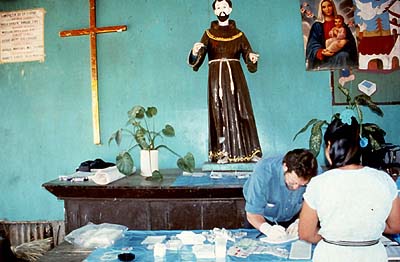
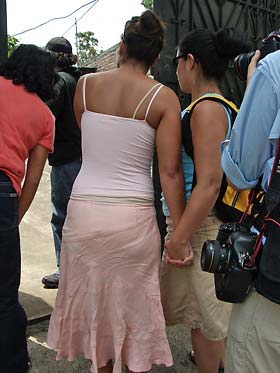
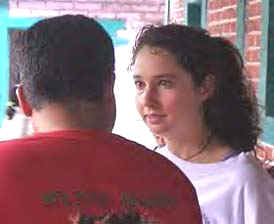
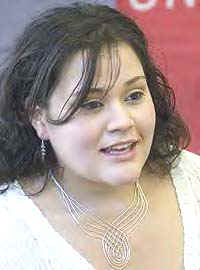
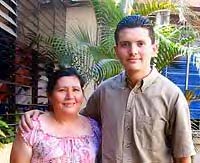
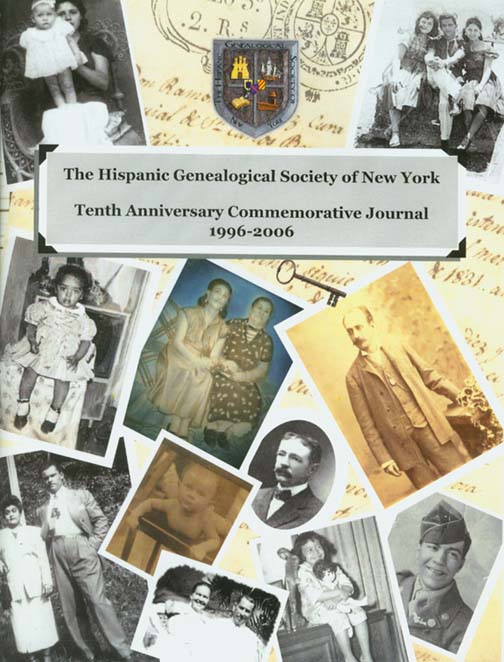
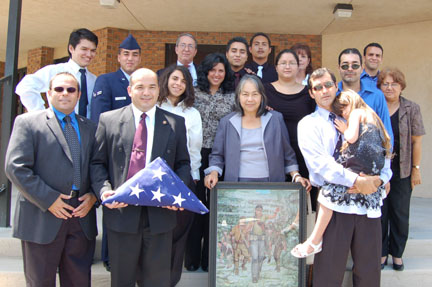
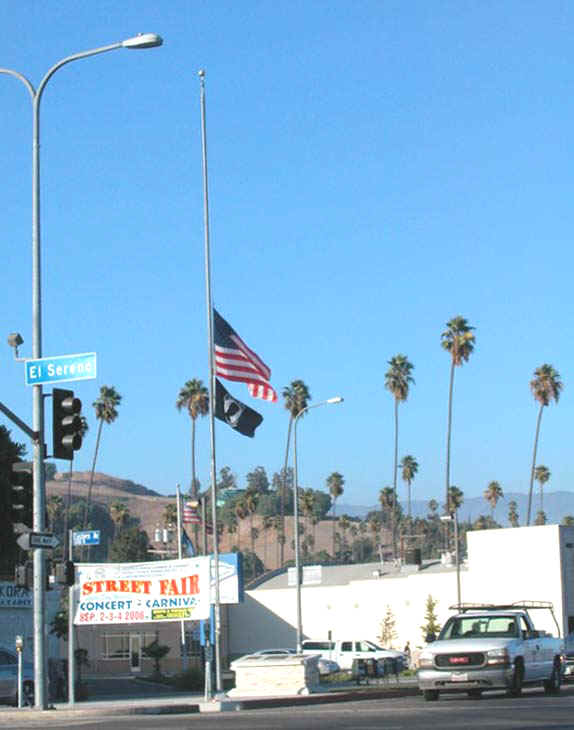
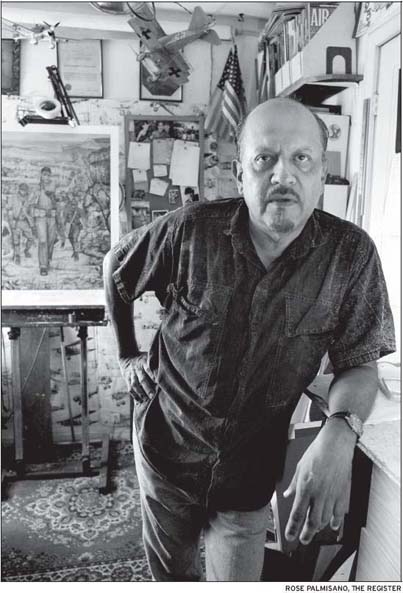
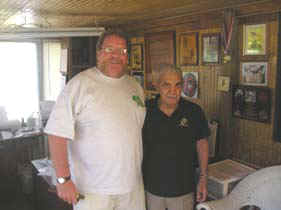 September 5, 2006
September 5, 2006 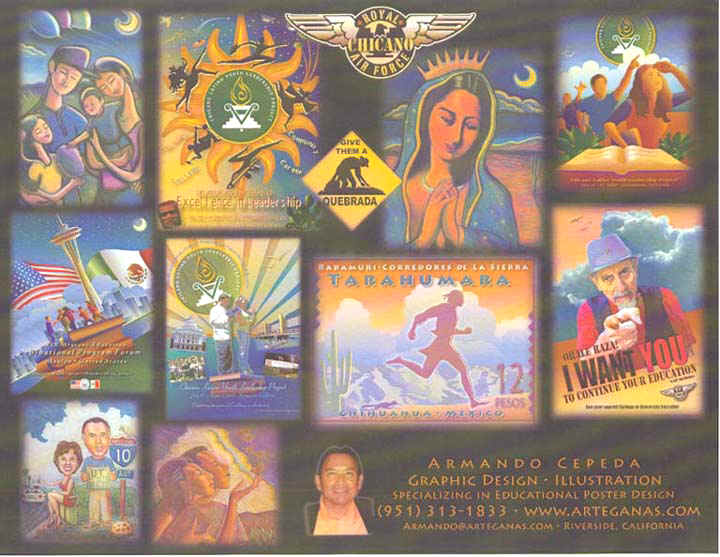
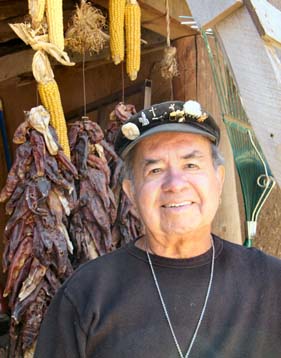 Book: "Beneath the Shadow of the Capitol"
Book: "Beneath the Shadow of the Capitol"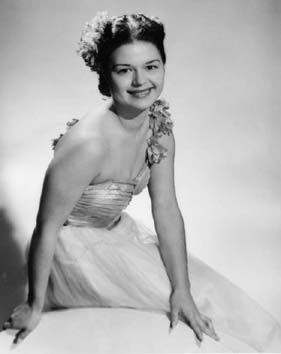
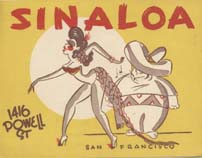

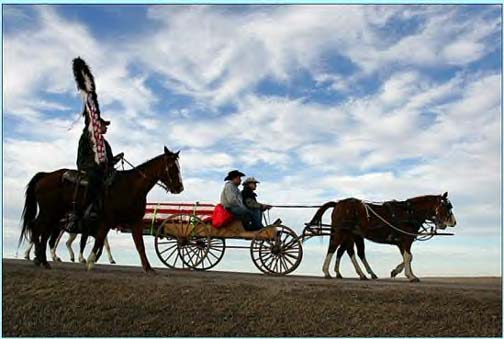
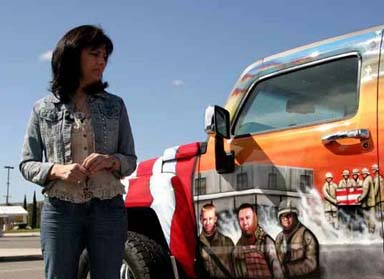 Karla
Comfort received a lot of looks and even some salutes from people when she
drove from Benton, Ark., to Camp Pendleton, Calif., in her newly-painted,
custom Hummer H3 March 2. The vehicle is adorned with the likeness of her
son, 20-year-old Lance Cpl. John M. Holmason, and nine other Marines with
F Company, 2nd Battalion, 7th Marine Regiment, 1st Marine Division who
where all killed by the same improvised explosive device blast in Fallujah,
Iraq, in December.
Karla
Comfort received a lot of looks and even some salutes from people when she
drove from Benton, Ark., to Camp Pendleton, Calif., in her newly-painted,
custom Hummer H3 March 2. The vehicle is adorned with the likeness of her
son, 20-year-old Lance Cpl. John M. Holmason, and nine other Marines with
F Company, 2nd Battalion, 7th Marine Regiment, 1st Marine Division who
where all killed by the same improvised explosive device blast in Fallujah,
Iraq, in December.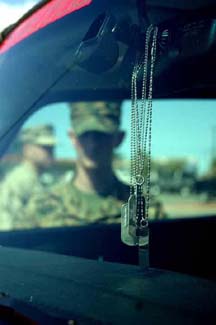
 Karla
Comfort came up with the idea for the rolling memorial when she and her
two other sons attended John's funeral in Portland, Oregon.
Karla
Comfort came up with the idea for the rolling memorial when she and her
two other sons attended John's funeral in Portland, Oregon.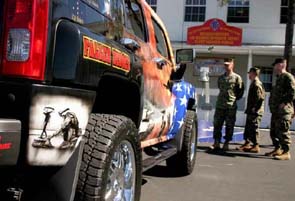 Two
hundred and fifty man-hours later, Powell had completed the vehicle. The
custom job would have cost $25,000.
Two
hundred and fifty man-hours later, Powell had completed the vehicle. The
custom job would have cost $25,000. 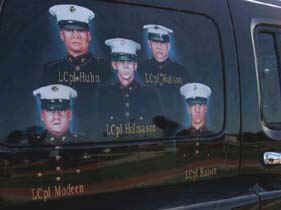

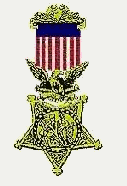
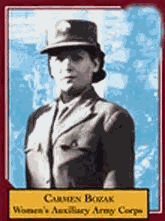
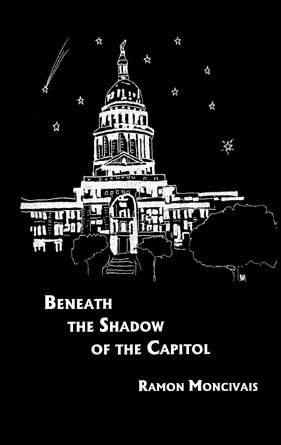 Ramon Montevias writes about his character:
Ramon Montevias writes about his character:
 do? Why are my mother and father who they are and not someone else? Why
cant I see my face but can see other peoples faces? It was a
mystery to me as a small child whose legs were so short I had to jump from
one stepping stone to the next. I remember running home and asking my
Mother these questions, but she had no answers for me. Go out and play.
You worry too much. was all she said.
do? Why are my mother and father who they are and not someone else? Why
cant I see my face but can see other peoples faces? It was a
mystery to me as a small child whose legs were so short I had to jump from
one stepping stone to the next. I remember running home and asking my
Mother these questions, but she had no answers for me. Go out and play.
You worry too much. was all she said.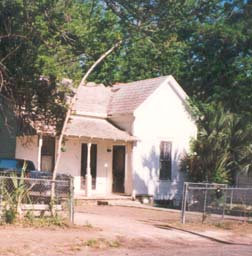 would sit there while she told us stories. It was wonderful looking down
from there. We felt on top of the world. When we slept over, we always
slept in the room under that roof. It was made of tin and when it rained,
we loved to hear the sound of the rain hitting the roof. These were fun
years.
would sit there while she told us stories. It was wonderful looking down
from there. We felt on top of the world. When we slept over, we always
slept in the room under that roof. It was made of tin and when it rained,
we loved to hear the sound of the rain hitting the roof. These were fun
years.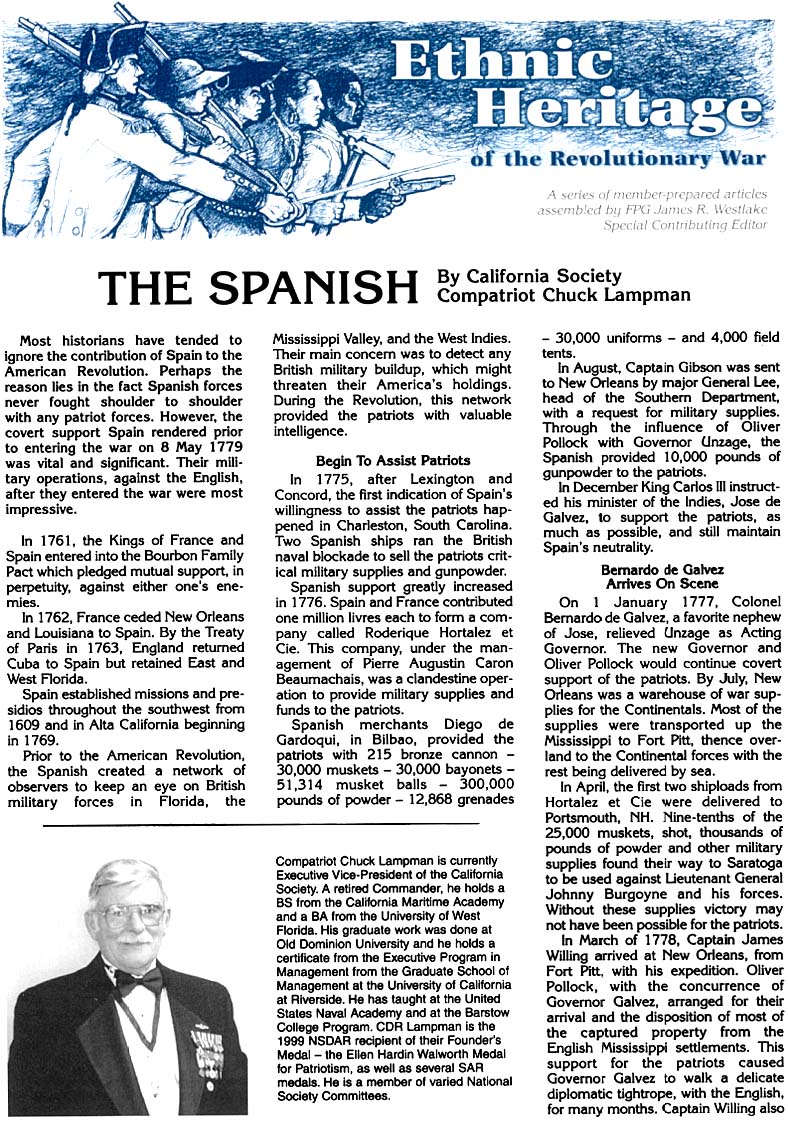
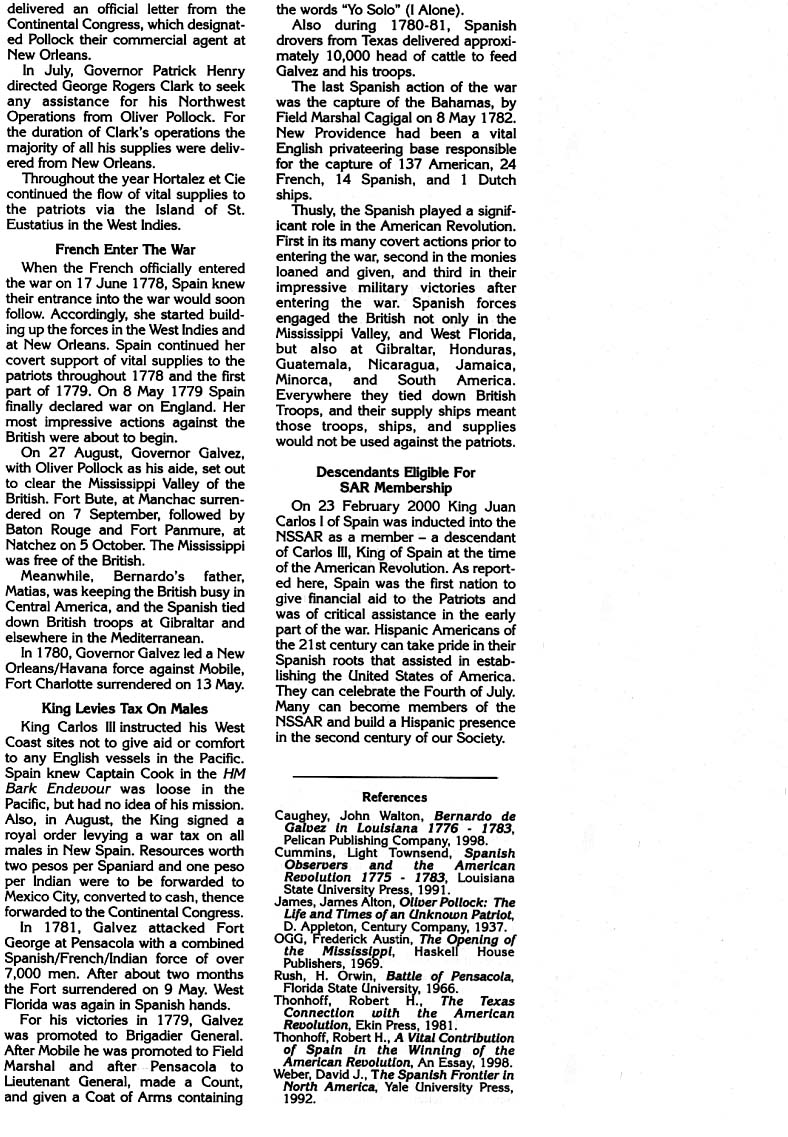

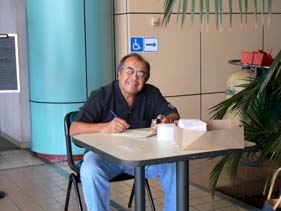
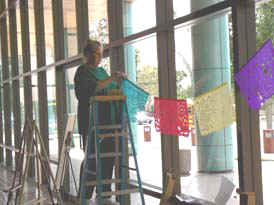
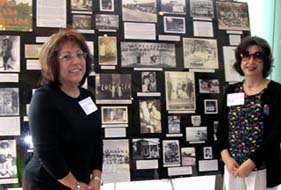
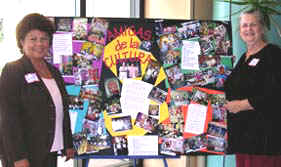
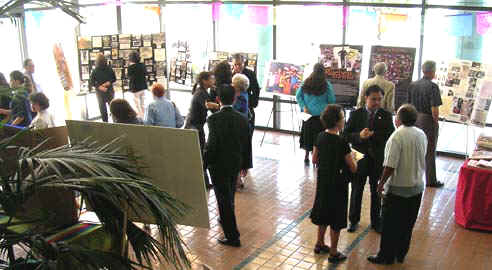
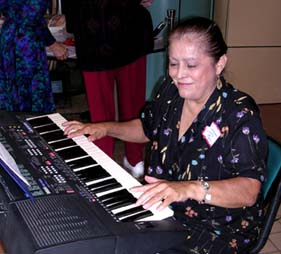
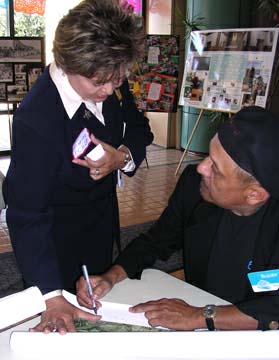
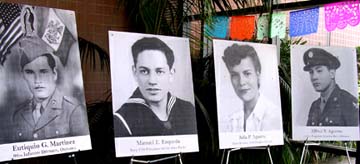
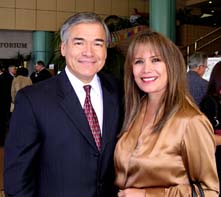
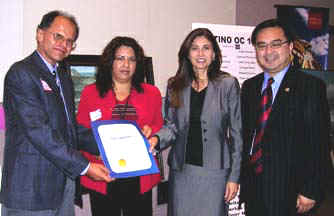
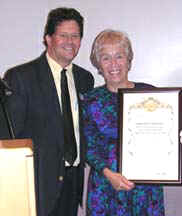
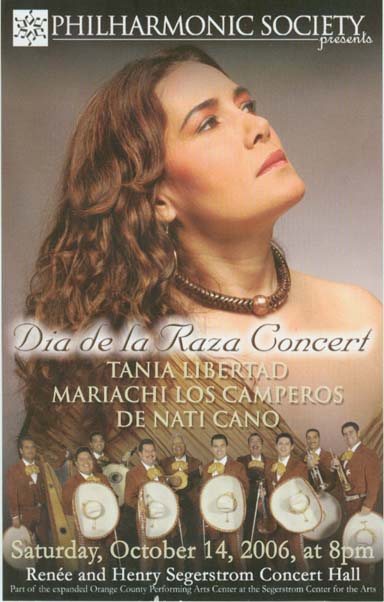
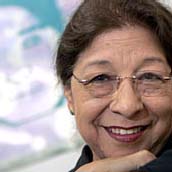 Nellie Kaniski has been honored as one of Orange County's inaugural
Latino OC 100, which celebrates the contributions of "upcoming,
accomplished and influential" Hispanics, as well as non-Hispanics
serving the community. This is the first of five Friday profiles in honor
of Hispanic Heritage Month, Sept. 15-Oct. 15.
Nellie Kaniski has been honored as one of Orange County's inaugural
Latino OC 100, which celebrates the contributions of "upcoming,
accomplished and influential" Hispanics, as well as non-Hispanics
serving the community. This is the first of five Friday profiles in honor
of Hispanic Heritage Month, Sept. 15-Oct. 15.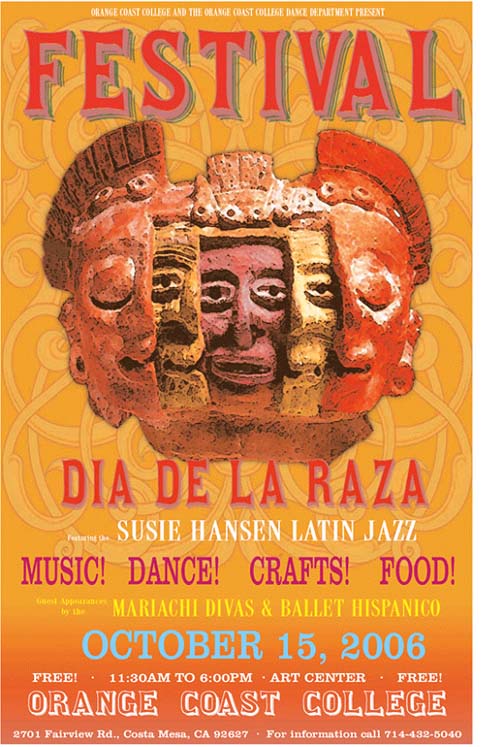
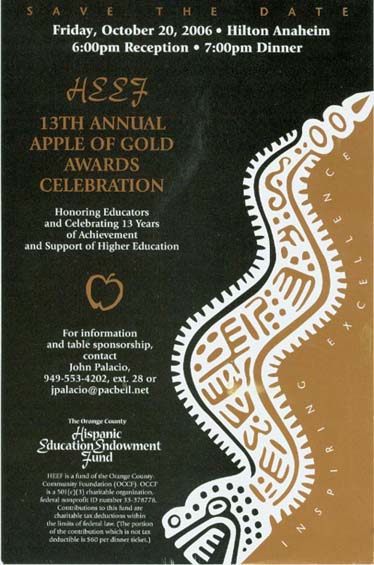

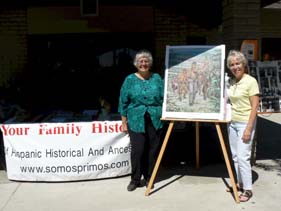

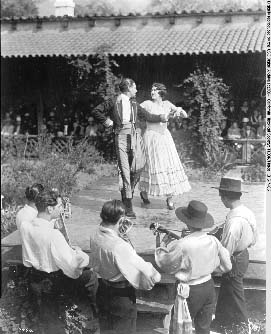 [[Editor:
Once again Joan De Soto
has
[[Editor:
Once again Joan De Soto
has 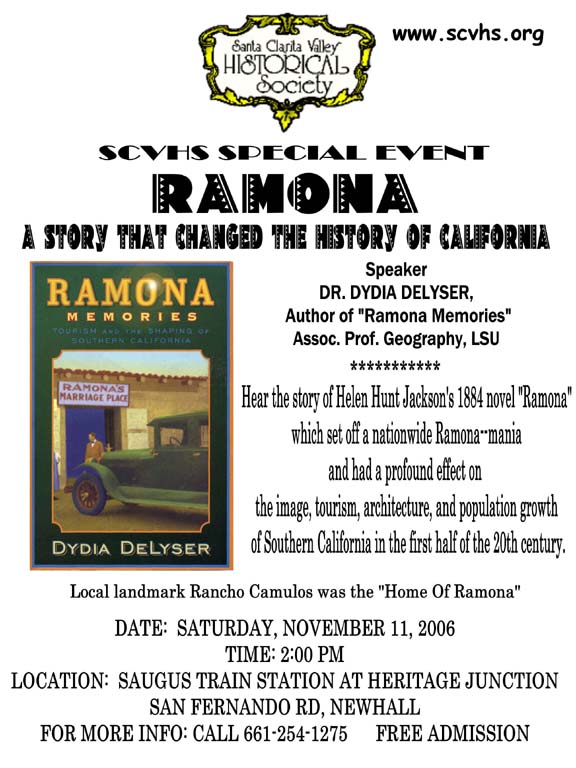
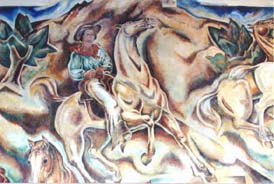
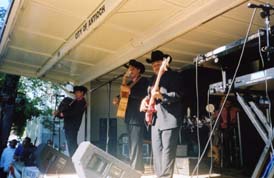 The Contra Costa County Fair lasts three days (and is held at the fairgrounds in Antioch, California) For at least two or three years that
The Contra Costa County Fair lasts three days (and is held at the fairgrounds in Antioch, California) For at least two or three years that 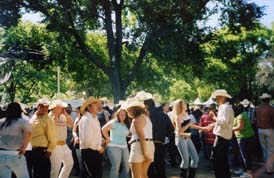
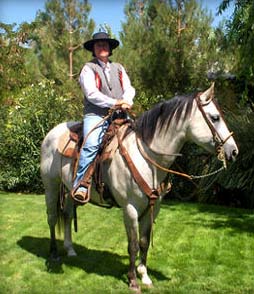 The old family movie shows my sister, Victoria, astride a tall, white
horse. She sits easily and trots around, the envy of the other
family-gathering of children, sometimes giving them rides under her
tutelage. At this time -- the early 1950s -- my sister is about eleven
years old, already a horsewoman. And why not, its in her heritage.
The old family movie shows my sister, Victoria, astride a tall, white
horse. She sits easily and trots around, the envy of the other
family-gathering of children, sometimes giving them rides under her
tutelage. At this time -- the early 1950s -- my sister is about eleven
years old, already a horsewoman. And why not, its in her heritage.
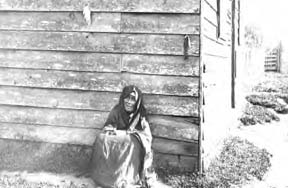 Photo: Josefa
Perez, seen here at Water and Branciforte around 1882, probably lived in
the recently unearthed adobe home
Photo: Josefa
Perez, seen here at Water and Branciforte around 1882, probably lived in
the recently unearthed adobe home
 Mickey Gemmill walked a strong path in honor and dignity at SF State,
Native American Studies and the development of ethnic studies during the
Alcatraz occupation and take over of the army fort that became DQU. Mickey
is remembered with respect and pride for his solid presence.
Mickey Gemmill walked a strong path in honor and dignity at SF State,
Native American Studies and the development of ethnic studies during the
Alcatraz occupation and take over of the army fort that became DQU. Mickey
is remembered with respect and pride for his solid presence. 
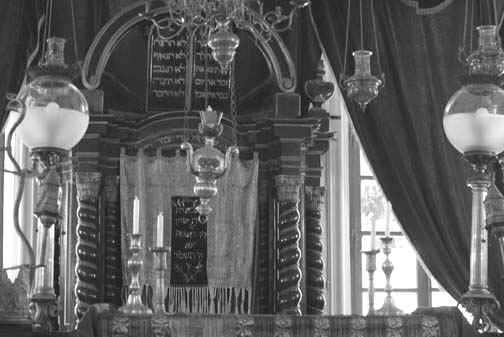
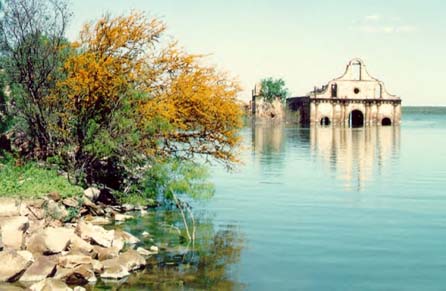

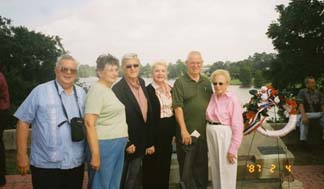 Photo
was taken at SAR's wreath laying on 23 Sept 2006 to commemorate the Battle of Baton Rouge when Gen Galvez and his soldiers ( including many Islenos ) captured Baton Rouge from the British thus opening the Mississippi River as a supply route to the Americans ( much of their supplies and money transported on the Mississippi River came from Spain and it's colonies.(l to r: Bill Carmena , Janell Hickey , Mac and Marlene Domangue , John Hickey and Kathryn
Prokop.)
Photo
was taken at SAR's wreath laying on 23 Sept 2006 to commemorate the Battle of Baton Rouge when Gen Galvez and his soldiers ( including many Islenos ) captured Baton Rouge from the British thus opening the Mississippi River as a supply route to the Americans ( much of their supplies and money transported on the Mississippi River came from Spain and it's colonies.(l to r: Bill Carmena , Janell Hickey , Mac and Marlene Domangue , John Hickey and Kathryn
Prokop.)
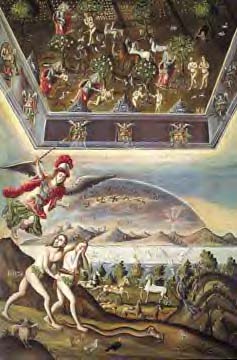 Some
years ago, a spectacular painting of the
Some
years ago, a spectacular painting of the  A new book written by uncle Jose Leon Robles de la Torre, this illustrious writer and historian presenting his new material today at El Museo Regional de la Laguna in Torreon, Coahuila, Mexico. As one of the pioneers, he writes in this book on how La Aduana de Torreon was established, he says this book would help students not only exterior but international as well. there is also historical information. Mr. Robles de la Torre is currently working as a writer for "El Siglo de Torreon" newspaper, his articles "Personajes de la historia de Mexico" are very popular. Congratulations uncle!
Sent by Mercy Bautista Olvera
A new book written by uncle Jose Leon Robles de la Torre, this illustrious writer and historian presenting his new material today at El Museo Regional de la Laguna in Torreon, Coahuila, Mexico. As one of the pioneers, he writes in this book on how La Aduana de Torreon was established, he says this book would help students not only exterior but international as well. there is also historical information. Mr. Robles de la Torre is currently working as a writer for "El Siglo de Torreon" newspaper, his articles "Personajes de la historia de Mexico" are very popular. Congratulations uncle!
Sent by Mercy Bautista Olvera 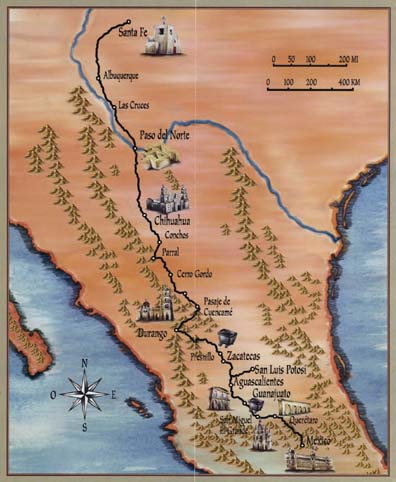
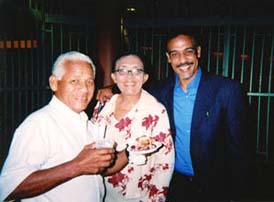 When I attended grade school, my name was mispronounced often. Instead of the Spanish Manuel, teachers made an extreme effort when saying it and always ended up pronouncing it incorrectly. For them, I was Man-You-El. That wasnt my name, but I didnt dare correct my teachers. At home and to my childhood buddies, I was Junior. I was named after my father, and it was customary to call the son with the fathers name. There were so many Juniors, but I did feel more in the family with that name.
When I attended grade school, my name was mispronounced often. Instead of the Spanish Manuel, teachers made an extreme effort when saying it and always ended up pronouncing it incorrectly. For them, I was Man-You-El. That wasnt my name, but I didnt dare correct my teachers. At home and to my childhood buddies, I was Junior. I was named after my father, and it was customary to call the son with the fathers name. There were so many Juniors, but I did feel more in the family with that name.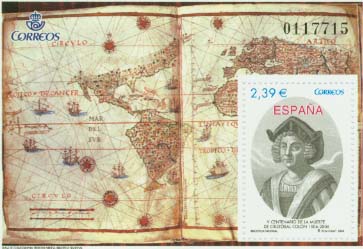
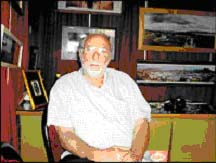
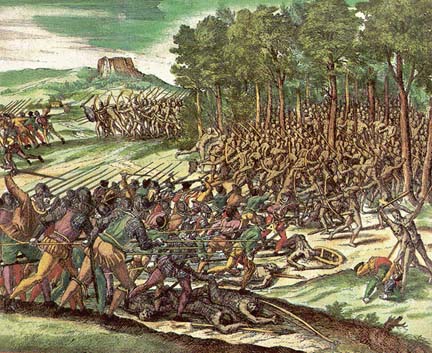
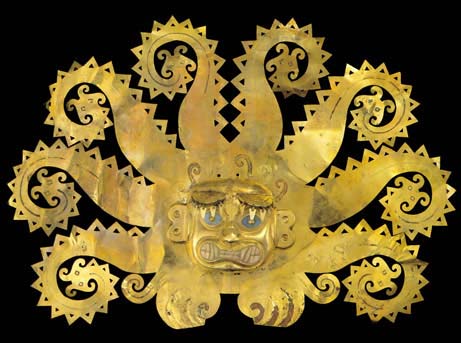
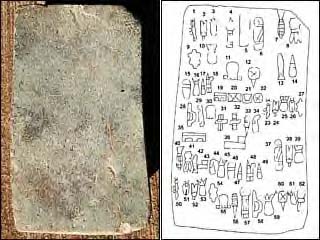 WASHINGTON (Sept. 15) - An
ancient slab of green stone inscribed with insects, ears of corn, fish and
other symbols is indecipherable so far, but one message is clear: It is
the earliest known writing in the Western Hemisphere.
WASHINGTON (Sept. 15) - An
ancient slab of green stone inscribed with insects, ears of corn, fish and
other symbols is indecipherable so far, but one message is clear: It is
the earliest known writing in the Western Hemisphere.